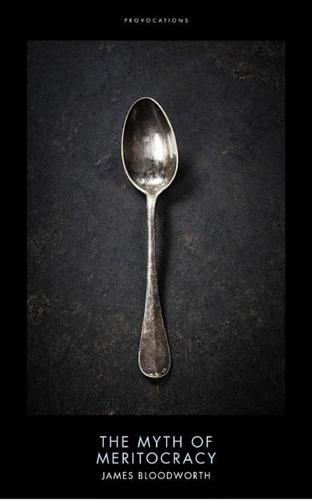
The Myth of Meritocracy: Why Working-Class Kids Still Get Working-Class Jobs (Provocations Series)
by
James Bloodworth
Published 18 May 2016
Anyone can walk into a job centre and locate a job cleaning toilets or driving an HGV lorry. However, many professional jobs – in business, journalism and law – are rarely advertised publicly at all, and rely heavily on relatively insular networks when searching for new recruits. Weak ties are everything. The strength of weak ties in contemporary Britain was reiterated in an analysis at the LSE of the recent Great British Class Survey. Those who worked in professional occupations were found to be far more likely to know others in similar occupations – and fewer people in working-class jobs. A similar pattern was apparent when researchers looked at the weak ties of manual workers.
…
, Social Mobility and Child Poverty Commission, 28 August 2014. 69 ‘State of the nation 2013’, op. cit. 70 ‘Journalists at Work’, NCTJ, February 2013. 71 ‘Why journalism has become “most exclusive middle-class profession”’, Dominic Ponsford, Press Gazette, 20 July 2009. 72 ‘If You Want To Get Hired, Act Like Your Potential Boss’, Drake Baer, Business Insider, 29 May 2014. 73 ‘The Strength of Weak Ties’, Mark S. Granovetter, American Journal of Sociology, vol. 78, issue 6, May 1973. 74 Social Class in the 21st Century, Professor Mike Savage, op. cit. Part VI GRAMMAR SCHOOLS ARE one of the most enduring educational myths. For some, they represent the obvious answer to Britain’s social mobility conundrum.

The Start-Up of You: Adapt to the Future, Invest in Yourself, and Transform Your Career
by
Reid Hoffman
and
Ben Casnocha
Published 14 Feb 2012
Granovetter acknowledged that measuring the strength of a relationship is a broader “combination of the amount of time, emotional intensity, the intimacy (mutual confiding), and the reciprocal services which characterize the tie.” Subsequent research affirmed Granovetter’s original conclusion even while measuring the strength of ties with more holistic criteria. See Granovetter’s “The Strength of Weak Ties: A Network Theory Revisited,” Sociological Theory 1 (1983): 201–33. 11. Mark S. Granovetter, “The Strength of Weak Ties,” American Journal of Sociology 78, no. 6 (1973): 1371. 12. Ibid., 1362. 13. Herminia Ibarra, Working Identity (Cambridge, MA: Harvard Business School Press, 1994): 113. 14. See Dunbar’s book How Many Friends Does One Person Need?
…
He asked participants to mark whether they saw the person often (twice a week), occasionally (more than once a year but less than twice a week), or rarely (once a year or less).10 About 16 percent of the recipients said they found their job through a contact they saw often. The rest found their job through a contact they saw occasionally (55 percent) or rarely (27 percent). In other words, the contacts who referred jobs were “weak ties.”11 He summed up his conclusion in a paper appropriately called “The Strength of Weak Ties”: The friends you don’t know very well are the ones who refer winning jobs. Granovetter accounts for this result by explaining that social cliques, which are groups of people who have something in common, often limit your exposure to wildly new experiences, opportunities, and information.
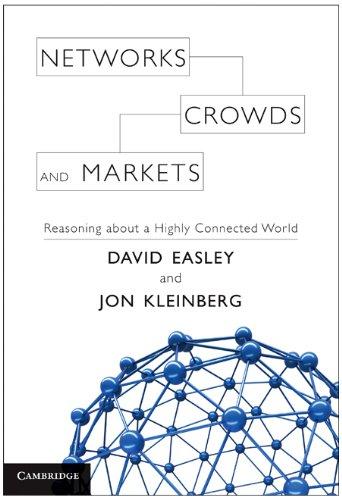
Networks, Crowds, and Markets: Reasoning About a Highly Connected World
by
David Easley
and
Jon Kleinberg
Published 15 Nov 2010
For example, Bearman and Moody have found that teenage girls who have low clustering coefficient in their network of friends are significantly more likely to contemplate suicide than those whose clustering coefficient is high [47]. 3.2 The Strength of Weak Ties So how does all this relate to Mark Granovetter’s interview subjects, telling him with such regularity that their best job leads came from acquaintances rather than close friends? In fact, triadic closure turns out to be one of the crucial ideas needed to unravel what’s going on. 3.2. THE STRENGTH OF WEAK TIES 59 J G K F H C A B D E Figure 3.4: The A-B edge is a local bridge of span 4, since the removal of this edge would increase the distance between A and B to 4.
…
If we imagine that people first hear about an innovation when any of their neighbors first adopts, then we see for example in Figure 19.5 that nodes 4 and 9 are aware of A as a new behavior right away, but it takes further time for them to actually adopt it. In an even stronger direction, nodes 11-14 are aware of A but never adopt it. Centola and Macy [100] and Siegel [363] make the interesting observation that threshold models for diffusion thus highlight an interesting subtlety in the strength-of-weak-ties theory that we discussed in Chapter 3. Recall that the strength of weak ties is rooted in the idea that weak social connections, to people we see infrequently, often form local bridges in a social network. They therefore provide access to sources of information — things like new job opportunities — that reside in parts of the network we otherwise wouldn’t have access to.
…
Networks, Crowds, and Markets: Reasoning about a Highly Connected World David Easley Jon Kleinberg Dept. of Economics Dept. of Computer Science Cornell University Cornell University To be published by Cambridge University Press, Spring 2010 Draft version: September 29, 2009. 2 Contents 1 Overview 9 1.1 Aspects of Networks . . . . . . . . . . . . . . . . . . . . . . . . . . . . . . . 10 1.2 Central Themes and Topics . . . . . . . . . . . . . . . . . . . . . . . . . . . 16 I Graph Theory and Social Networks 29 2 Graphs 31 2.1 Basic Definitions . . . . . . . . . . . . . . . . . . . . . . . . . . . . . . . . . 31 2.2 Paths and Connectivity . . . . . . . . . . . . . . . . . . . . . . . . . . . . . . 33 2.3 Distance and Breadth-First Search . . . . . . . . . . . . . . . . . . . . . . . 40 2.4 Network Datasets: An Overview . . . . . . . . . . . . . . . . . . . . . . . . . 48 2.5 Exercises . . . . . . . . . . . . . . . . . . . . . . . . . . . . . . . . . . . . . . 52 3 Strong and Weak Ties 55 3.1 Triadic Closure . . . . . . . . . . . . . . . . . . . . . . . . . . . . . . . . . . 56 3.2 The Strength of Weak Ties . . . . . . . . . . . . . . . . . . . . . . . . . . . . 58 3.3 Tie Strength and Network Structure in Large-Scale Data . . . . . . . . . . . 64 3.4 Tie Strength, Social Media, and Passive Engagement . . . . . . . . . . . . . 68 3.5 Closure, Structural Holes, and Social Capital . . . . . . . . . . . . . . . . . . 72 3.6 Advanced Material: Betweenness Measures and Graph Partitioning . . . . . 77 3.7 Exercises . . . . . . . . . . . . . . . . . . . . . . . . . . . . . . . . . . . . . . 91 4 Networks in Their Surrounding Contexts 95 4.1 Homophily . . . . . . . . . . . . . . . . . . . . . . . . . . . . . . . . . . . . . 96 4.2 Mechanisms Underlying Homophily: Selection and Social Influence . . . . . . 100 4.3 Affiliation . . . . . . . . . . . . . . . . . . . . . . . . . . . . . . . . . . . . . 103 4.4 Tracking Link Formation in On-Line Data . . . . . . . . . . . . . . . . . . . 108 4.5 A Spatial Model of Segregation . . . . . . . . . . . . . . . . . . . . . . . . . 117 4.6 Exercises . . . . . . . . . . . . . . . . . . . . . . . . . . . . . . . . . . . . . . 125 5 Positive and Negative Relationships 129 5.1 Structural Balance . . . . . . . . . . . . . . . . . . . . . . . . . . . . . . . . 130 5.2 Balanced Networks and the Cartwright-Harary Theorem . . . . . . . . . . . 133 5.3 Applications of Structural Balance . . . . . . . . . . . . . . . . . . . . . . . 136 3 4 CONTENTS 5.4 A Weaker Form of Structural Balance . . . . . . . . . . . . . . . . . . . . . . 140 5.5 Advanced Material: Generalizing the Definition of Structural Balance . . . . 143 5.6 Exercises . . . . . . . . . . . . . . . . . . . . . . . . . . . . . . . . . . . . . . 159 II Game Theory 163 6 Games 165 6.1 What is a Game?
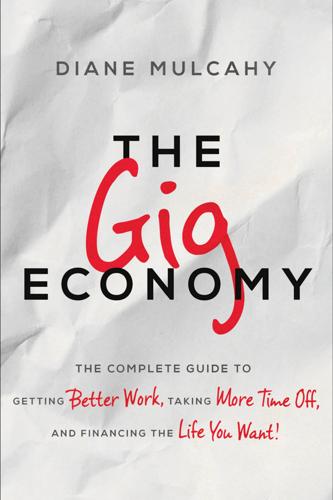
The Gig Economy: The Complete Guide to Getting Better Work, Taking More Time Off, and Financing the Life You Want
by
Diane Mulcahy
Published 8 Nov 2016
Ward, “Job Mobility and the Careers of Young Men,” NBER, The National Bureau for Economic Research, July 1988. www.nber.org/papers/w2649 See also, Keng, Cameron, “Employees Who Stay in Companies Longer than Two Years Get Paid 50% Less,” Forbes, June 22, 2014. www.forbes.com/sites/cameronkeng/2014/06/22/employees-that-stay-in-companies-longer-than-2-years-get-paid-50-less/#-3726c14a210e 17. Schoemaker, Paul J. H., and Robert E. Gunther, Profiting from Uncertainty: Strategies for Succeeding No Matter What the Future Brings (New York: Atria Press, 2002). CHAPTER 4 1. Granovetter, Mark S, “The Strength of Weak Ties,” American Journal of Sociology 78, no. 6. (1973). sociology.stanford.edu/sites/default/files/publications/the_strength_of_weak_ties_and_exch_w-gans.pdf 2. Halligan, Brian, Dharmesh Shah, Inbound Marketing: Get Found Using Google, Social Media and Blogs, Wiley, October 9, 2009. 3. CB Insights, The Periodic Table of Venture Capital Blogs, February 10, 2015. www.cbinsights.com/blog/venture-capital-blogs-periodic-table/ 4.
…
It’s difficult to rely solely on a compelling résumé or being heard above the persistent noise of social media. We’re better off cultivating our connections and networks of people who know us, like us, and can help point us toward good opportunities. A good network is both deep and broad. Mark Granovetter, a sociologist at Stanford, best described the benefits of both in his seminal paper “The Strength of Weak Ties.”1 Our deep connections come from what he calls strong ties. They are limited in number and are the people we know best and interact with most frequently, like spouses, close friends, and current colleagues. Strong ties are important emotionally and are essential as the backbone of any fulfilling life.

The Hype Machine: How Social Media Disrupts Our Elections, Our Economy, and Our Health--And How We Must Adapt
by
Sinan Aral
Published 14 Sep 2020
The $370 billion estimate of annual welfare contributions is an extrapolation of their monthly estimate. One theory we discussed: Mark Granovetter, “The Strength of Weak Ties,” American Journal of Sociology 78 (1973): 1360–80. tested this theory on an entire country: Nathan Eagle, Michael Macy, and Rob Claxton, “Network Diversity and Economic Development,” Science 328, no. 5981 (2010): 1029–31. The collaboration allowed us to test the cause and effect relationship: Guillaume Saint-Jacques, Erik Brynjolfsson, and Sinan Aral, “A Causal Test of the Strength of Weak Ties,” MIT Initiative on the Digital Economy Working Paper, February 2020. measure the effect of Facebook on economic opportunity and wages: Luis Armona, “Online Social Network Effects in Labor Markets,” Stanford University, Department of Economics Working Paper, 2018.
…
As we’ll see in Chapter 5, this structure powered Facebook’s go-to-market strategy. To beat MySpace, Facebook recruited users within, rather than across, clusters by targeting friends on college campuses, increasing the safety and familiarity of our experience in joining its network. The strength of weak ties, which connect distant clusters, is that they are the paths through which novel information flows between disparate parts of the network. As my friend and colleague Ron Burt has argued, people in the same densely connected clusters tend to know the same things and think the same way. Novelty therefore flows to people through their weak bridging ties to other clusters.
…
How, for example, how would you put a price on the cost of social media’s disruption of democracy? (Unequal) Opportunity Social networks create economic opportunity and social mobility, but for some more than others. One theory we discussed in Chapter 3 is that social media networks create opportunity through the “strength of weak ties.” The theory argues that economic opportunity comes to us disproportionately through our weak ties—who are less well connected to the rest of our friends, make our networks “diverse,” and tend to swim in pools of opportunity that our other contacts don’t see. They are the conduits of novel opportunities—for example, job opportunities.
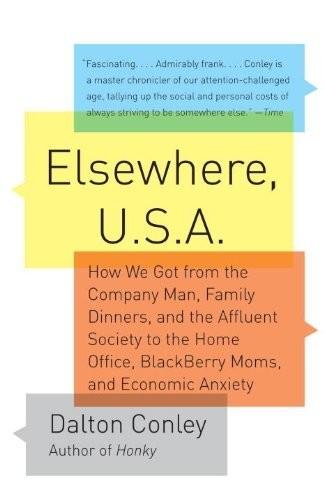
Elsewhere, U.S.A: How We Got From the Company Man, Family Dinners, and the Affluent Society to the Home Office, BlackBerry Moms,and Economic Anxiety
by
Dalton Conley
Published 27 Dec 2008
That is all well and nice, but the clincher came a few years after the original Milgram study, in 1972, when another sociologist, Mark Granovetter, gave us the second ethic of the network society in an article that would become a classic in social science and beyond. In “The Strength of Weak Ties,” Granovetter argued that, ironically, it is often relatively weak ties— connections to folks you don’t know all that well and that are not reinforced by other indirect pathways—that turn out to be quite valuable because they bring new information. The strength of weak ties has been found to be especially useful for job (and romantic) searches. In a densely connected network, all the individuals probably know the same people, hear of the same job openings, have the same contacts, and so on.
…
Theda Skocpol, “Civic Transformation and Inequality in the Contemporary United States,” in Social Inequality, ed. Kathryn M. Neckerman (New York: Russell Sage Foundation, 2004), pp. 729-68. 3. Stanley Milgram, “The Small World Problem,” Psychology Today, May 1967, pp. 60-67. 4. Mark S. Granovetter, “The Strength of Weak Ties,” American Journal of Sociology 78, no. 6 (May 1973): 1360-80. 5. Damon Centola, Robb Willer, and Michael Macy “The Emperor’s Dilemma: A Computational Model of Self-Enforcing Norms,” American Journal of Sociology 110, no. 4 (January 2005): 1009-40. CONCLUSION 1. Elisabeth M. Landes and Richard A.
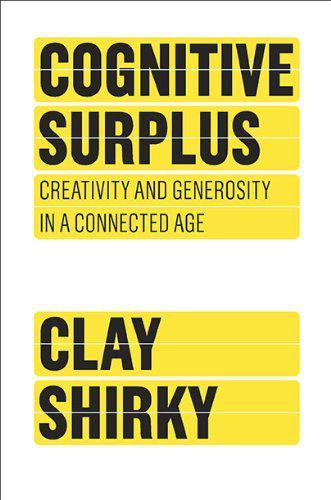
Cognitive Surplus: Creativity and Generosity in a Connected Age
by
Clay Shirky
Published 9 Jun 2010
Ante, “Napster’s Shawn Fanning: The Teen Who Woke Up Web Music,” BusinessWeek, April 12, 2000, Bloomberg, http://www.businessweek.com/ebiz/0004/em0412.htm (accessed January 9, 2010). 120 Napster acquired tens of millions of users in less than two years : Benny Evangelista, “News Analysis: Internet Music Will Still Play on Despite Napster’s Uncertain Future,” San Francisco Chronicle, February 18, 2001, Hearst Communications, http://www.sfgate.com/c/a/2001/02/18/BU39387.DTL (accessed January 9, 2010). 124 “He who receives ideas from me”: Quoted in John Pitman, “Open Access to Professional Information,” IMS Bulletin 36.8 (2007): 13. 125 “Triumph of the Default”: Kevin Kelly, “Triumph of the Default,” The Technium, June 22, 2009, Creative Commons, http://www.kk.org/thetechnium/archives/2009/06/triumph_of_the.php (accessed January 9, 2010). 126 tired of their country’s divisive politics: Sabrina Tavernise, “Young Pakistanis Take One Problem into Their Own Hands,” The New York Times, May 18, 2009, http://www.nytimes.com/2009/05/19/world/asia/19trash.html (accessed January 9, 2010). The Responsible Citizens site is at http://www.zimmedarshehri.com (accessed January 7, 2010). 128 The Strength of Weak Ties: Mark S. Granovetter, “The Strength of Weak Ties,” American Journal of Sociology 78.6 (1973): 1360. 128 social networks spread all kinds of behaviors: Nicholas Christakis and James Fowler discuss “Social Networks and Happiness” in Edge (2008), http://www.edge.org/3rd_culture/christakis_fowler08/christakis_fowler08_index.html (accessed January 9, 2010).
…
The immediate effect of their actions was to reduce the amount of trash on a few market streets, but their longer-term value is not their output but their example. As they put it in a Responsible Citizens manifesto: “We wish to nurture in everyone a community spirit.” They were trying to make civic action contagious. This idea is less crazy than it sounds. In 1973 Mark Granovetter showed in a seminal paper, “The Strength of Weak Ties,” that people tend to find jobs through casual acquaintances rather than through close friends or family. Since then an increasing body of research has demonstrated the importance of social networks to our well-being. Nicholas Christakis and James Fowler, researchers at Harvard Medical School, have shown that social networks spread all kinds of behaviors: we are likelier to be obese if our friends are obese, or to exercise if they exercise, or even to be happy if they are happy.
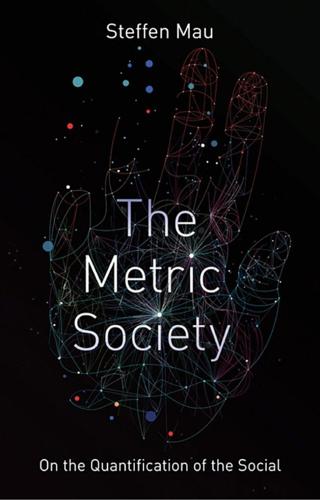
The Metric Society: On the Quantification of the Social
by
Steffen Mau
Published 12 Jun 2017
There is plenty of evidence to suggest that the predictive quality of the review system is less than outstanding: the fact that reviewer assessments are often relatively inconsistent, for one thing, or show a poor correlation with citation rates (Osterloh & Frey 2015). Mark Granovetter's ‘The strength of weak ties’ (1973), one of the most widely quoted sociological essays (every cliché begs repetition!), was emphatically rejected by the journal to which it was originally submitted, and the same is true of many celebrated economics papers – even subsequent Nobel Prize-winners have suffered similar experiences (Siler et al. 2015).
…
Corley (2002) ‘Being good versus looking good: business school rankings and the Circean transformation from substance to image’, Academy of Management Learning & Education 1/1 (pp. 107-20). Granka, Laura A. (2010) ‘The politics of search: a decade retrospective’, The Information Society 26/5 (pp. 364-74). Granovetter, Mark S. (1973) ‘The strength of weak ties’, American Journal of Sociology 78/6 (pp. 1360-80). Gregg, Melissa (2015) ‘Inside the data spectacle’, Television & New Media 16/1 (pp. 37-51). Gretzel, Ulrike, and Kyung H. Yoo (2008) ‘Use and impact of online travel reviews’, in Information and Communication Technologies in Tourism 2008, ed.
…
Index ‘20-70-10’ rule 155 academics 139 and altmetrics 77–8 and h-index 75–6, 139, 144 self-documentation and self-presentation 76–7 status markers 74–8 accountability 3, 91, 115, 120, 134, 147, 159 accounting, rise of modern 17 activism alliance with statistics 127 Acxiom 164–5 ADM (automated decision-making) 63 Aenta 108 Airbnb 88 airlines and status miles 71–2 algorithms 7, 64, 127, 167 and nomination power 123–5, 126, 141–2 AlgorithmWatch 127 altmetrics 77–8 Amazon 96, 150, 156 American Consumers Union 167 apps 99, 105, 150 finance 66–7 fitness and health 68, 102–3, 104, 107 Moven 65–6 Asian crisis (1997) 57 audit society 24–5 automated decision-making (ADM) 63 averages, regime of 155–7 Barlösius, Eva 113 Baty, Phil 48 Bauman, Zygmunt 143 behavioural reactivity 131 benchmarks, regime of 155–7 Berlin, television tower 40 Better Life Index 20 Big Data 2, 79, 123 biopolitics 19 of the market 70 biopower 19 Boam, Eric 104 body images, regime of 156–7 Boltanzki, Luc 125–6 border controls 73–4 borders, smart 74 Bourdieu, Pierre 111, 114, 115, 162 BP 108 Bude, Heinz 37 bureaucracy 18 calculative practices 11, 124 expansion of 11, 115 and the market 15–17 Campbell, Donald T. 130–1 Campbell's Law 130–1 capitalism 15, 54, 55 digital 150 capitalists of the self 163 Carter, Allan 48 Chiapello, Ève 125–6 Chief Financial Officer (CFO) 17 China Sesame Credit 67 Social Credit System 1, 166 choice revolution 118–19 class and status 33 class conflict switch to individual competition 168–70 classification 60–80 see also scoring; screening collective body 104–6 collective of non-equals 166–8 commensurability 31–3, 44, 159 Committee of Inquiry on ‘Growth, Wealth and Quality of Life’ (Germany) 127 commodification 163, 164 Community (sitcom) 96 companies 16–17 comparison 7, 26–39, 159 and commensurability/incommensurability 31–3 and competition 28 dispositive(s) of 7, 28–31, 159, 169 new horizons of 33–5 part of everyday life 27 prerequisites for social 35–6 registers of 135–9 and self-esteem 30 shifts in class structure of 33 and status 29–30, 36–7 universalization of 27–8 COMPAS (Correctional Offender Management Profiling or Alternative Sanctions) 79 competition 6, 7, 115–19, 159–60 and comparison 28 increasing glorification of 159 and neoliberalism 23 and performance measurement 115–19 and quantification 116–17 and rankings 45 switch from class conflict to individual 168–70 competitive singularities 169 consumer generated content (CGC) 85–6 control datafication and increased 143, 147, 169 individualization of social 143 levers of social 144 relationship between quantification and 78 conventionalization 128 Cordray, Julia 97 Correctional Offender Management Profiling or Alternative Sanctions (COMPAS) 79 Corruption Perceptions Index 26 cosmetic indicators 135 Couchsurfing 88 credit risk colonialization 64 credit scoring 63–7 and social status 67 criminal recidivism, scoring and assessment of 62–3, 79 criteria reductionism 22 cumulative advantages, theory of 174 CureTogether 106 customer reviews 82–6, 87, 88 Dacadoo 68 Daily Telegraph 149 darknet 87 data behaviourism 171 data leaks 152 data literacy 21 data mining 4, 22, 163 data protection 72, 142 data repositories 62, 73–4 data storage 22, 73, 135 data voluntarism 4, 152, 153, 159 dating markets and health scores 70 de Botton, Alain 30 decoupling 133, 136, 174–5 democratization and digitalization 166 difference 2 visibilization and the creation of 40–3 ‘difference revolution’ digitalization giving rise to 166–7 digital capitalism 150 digital disenfranchisement of citizens 151 digital health plans 70 digital medical records 67 digitalization 2, 7, 21–2, 25, 63, 73, 80, 111, 123, 180 and democratization 166 giving rise to ‘difference revolution’ 166–7 as ‘great leveller’ 166 quantitative bias of 124 disembedding 13 distance, technology of 23–4 diversity versus monoculture 137–40 doctors, evaluation of by patients 92–3 Doganova, Liliana 5–6 double-entry bookkeeping 15, 163 e-recruitment 61 eBay 87 economic valuation theory 5 economization 22–4, 38, 115, 117 and rise of rankings 46 education and evaluation 89–91 evaluation of tutors by students 89–90 law schools 44, 138–9 output indicators and resource allocation in higher 132 and Pisa system 122, 145–6 Eggers, Dave The Circle 41, 82–3 employer review sites 83 entrepreneurial self 3, 154 epistemic communities 121 equivalence 16, 27 Espeland, Wendy 44, 139 esteem 29, 30 and estimation 15, 38 see also self-esteem Etzioni, Amitai The Active Society 20 European Union 122 evaluation 81–98 connection with recognition 38 cult and spread of 7, 97–8, 134 education sector 89–91 loss of time and energy 136 and medical sector 91–3 peer-to-peer ratings 87–8 portals as selectors 84–6 pressure exerted by reviews 147–8 and professions 89–93 qualitative 117 satisfaction surveys 82–4 and social media 93–8 of tutors by students 89–90 evidence-basing 3 exercise and self-tracking 101–4 expert systems 7 transnational 121–2 experts, nomination power of 119–23, 126 Facebook 94 FanSlave 95 Federal Foreign Office (Germany) 53 feedback power of 147–8 and social media 93–4 Fertik, Michael 66 Fitch 56 fitness apps 68, 102–3, 104, 107 Floridi, Luciano 105 Foucault, Michel 19 Fourcade, Marion 163–4 Franck, Georg 29 fraud 137 Frey, Bruno ‘Publishing as Prostitution’ 146 ‘gaming the system’ 132 GDP (gross domestic product) 14 dispute over alternatives to 127–8 General Electric 155 Germany Excellence Initiative 51 higher education institutes 52–3 Gerstner, Louis V. 130 Glassdoor.com 83 global governance 122 globalization 34, 73 governance 12 self- 19, 37, 105 state as data manager 17–20 ‘government at a distance’ 145 governmentality 112 GPS systems 150 Granovetter, Mark ‘The strength of weak ties’ 147 gross domestic product see GDP h-index 75–6, 139, 144 halo effect 90 Han, Byung-Chul 154 Hanoi, rat infestation of 130 happiness and comparison 30 Hawthorne effect 107 health and self-tracking 101–4 health apps 68, 102–3, 104, 107 health scores 67–71 health status, quantified 67–71 Healy, Kieran 163–4 Heintz, Bettina 14, 33, 34 hierarchization/hierarchies 1, 5, 6, 11, 33, 39, 40–59, 174 and rankings 41–2, 43, 44, 48 higher education, output indicators and resource allocation 132 Hirsch, Jorge E. 75 home nursing care 135–6 hospitals and performance indicators 131 Human Development Index 14 hyperindividualization 167–8 identity theory 29 incommensurability 31–3 indicators 2, 3, 5, 20, 23–4, 34, 114, 159 and competition 116–17 and concept of reactive measurements 129–33 cosmetic 135 economic 7 governance by 24 politics of 14 status 35, 75 see also performance indicators individualization of social control 143 industrial revolution 19 inequality 6, 8, 158–76 collectives of non-equals 166–8 establishment of worth 160–2 inescapability and status fluidity 170–4 reputation management 162–6 switch from class conflict to individual competition 168–70 inescapability of status 170–4 information economy 2 information transmission interfaces, between social subsystems 165–6 institutional theory 113 insurance companies 72, 108, 151, 152, 167 International Labour Organization 122 investive status work 36–7 Italian Job, The (film) 138 justice 126 Kaube, Jürgen 2 Kula, Witold 16 Latour, Bruno 34 law schools 44, 138–9 league tables 35, 43, 46, 47, 51, 52, 53, 91, 138, 139, 146, 162, 175 legitimate test, concept of 125–6 Lenin, Vladimir 116 lifelogging 99, 109, 153 Luhmann, Niklas 166 Lyon, David 142 McClusky, Mark 101 McCullough, Nicole 97 Mann, Steve 153 market(s) calculative practices of 15–17 and neoliberalism 23 and rating agencies 55–6 Marron, Donncha 65 Matthew effect 174–5 measurement, meaning 10 media reporting 33 medical sector and evaluation 91–3 hospitals and performance indicators 131–2 MedXSafe 70 meritocracy 23, 161 Merton, Robert K. 161, 174 ‘metric revolution’ 16 Miller, Peter 112 mobility 71–4 border controls 73 digital monitoring of 72 and scoring 71–4 smart cars 72 and status miles 71–2 money as means of exchange 16 monoculture versus diversity 137–40 mood, self-tracking of 101–4 Moody's 56 motivation 106–10 and rankings 45 Moven 65–6 Münch, Richard 145 Nachtwey, Oliver 150 naturalization 113 neoliberalism 3, 12, 23, 25 basic tenets of 23 New Public Management 3, 117, 136, 155 NHS (National Health Service) 118 nomination power 111–28 and algorithms 123–5, 126, 141–2 critique of 125–8 and economization 115 of experts 119–23, 126 performance measurement and the framing of competition 115–19 and the state 112–15 non-equals, collectives of 166–8 normative pressure 144–6 North Korea 144 ‘number rush’ 2 numbers 13–14, 15 numerical medium 8, 14, 16, 18, 28, 33, 113, 160, 166 objectivization 35, 154, 160 OECD 122 Offe, Claus 175 Old Testament 17 omnimetrics 9 O’Neil, Cathy Weapons of Math Destruction 79 optimization 12, 25 Oral Roberts University (Oklahoma) 108 Peeple app 96–7 peer-to-peer ratings 87–8 Pentland, Alex 151 people analytics 150–1 performance enhancement 12 performance indicators 12, 38, 53, 74, 118, 119, 120, 129, 155 and hospitals 131–2 performance measurement 23, 38, 115–19 performance-oriented funding allocation 22 performance paradox 132 performance targets 4 Personicx 165 Pisa system 122, 145–6 politicians 14, 120 politics 114 portals 84–6, 88, 90–1 power of nomination see nomination power prestige 8, 29, 67, 144 principal–agent problem 147–8 private consultancy services 117 professional control, loss of 133–4 professionalization 19, 133 professions and evaluation 89–93 publicity 33 QS ranking 52 qualitative evaluation 117 quantification advantages of 8 engines of 21–5 history 11 impact and consequences of 5, 6 meaning 10, 12–15 risks and side-effects 7, 129–40 role of 35 quantified self 99–110 Quantified Self (network) 99–100 quantitative evaluation see evaluation quantitative mentality 11–12 quasi-markets 116, 118–19 race and assessment of criminal recidivism risk 79 rankings 47–53, 58–9, 60, 144 and competition 45 and compliance 44 differences between ratings and 42–3 disadvantage of 43–4 economization and rise of 46 and evaluation portals 84–6 and hierarchies 41–2, 43, 44, 48 and image fetishization 47 and motivation 45 as objectivity generators 41 performance-enhancing role 46 popularity of 41 as positional goods 45 purpose of 45 and reputation 48, 49, 50, 52 as social ushers 42 and status anxiety 46–7 university 6, 7, 43, 47–53, 144, 175 Welch's forced 155–6 rating agencies, market power of 53–9 ratings 41–3, 53–9, 60 definition 54 differences between rankings and 42–3 and evaluation portals 84–6 as objectivity generators 41 peer-to-peer 87–8 as social ushers 42 rationalization 5, 11, 12, 14, 15, 16, 19, 105, 110, 154, 163 Raz, Joseph 31–2 reactive measurements 129–33 recommendation marketing 85 recruitment, e- 61 reference group theory 29 reputation 29, 39, 66, 74, 121 academic 75–6 cultivating good 47 and rankings 48, 49, 50, 52 rating of 87–8 signal value of 87 social media and like-based 93–8 reputation management 4, 50, 162–6 reputation scoring 87–8 research community 146 and evaluation system 146 and review system 146–7 ResearchGate 77 reviews 136 customer 82–6, 87, 88 doctor 92 high demand for 136 lecturers/tutors 90 performance 25, 149 pressure exerted by popular 147 Riesman, David 37 risks of quantification 129–40 loss of professional control 133–5 loss of time and energy 135–7 monoculture versus diversity 137–40 reactive measurements 129–33 Rosa, Hartmut 94, 173 Rose, Nikolas 112 Rousseau, Jean-Jacques 28–9 running apps 107 Runtastic app 107 satisfaction surveys 82–4 Sauder, Michael 44, 139 Schimank, Uwe 134 Schirrmacher, Frank 152 Schmidt, Eric 147 schools and choice 118–19 evaluation of 90–1 league tables 46 and Pisa system 122, 145–6 scoring 7, 60, 61, 78–80 academic status markers 74–8 and assessment of criminal recidivism 62–3 credit 63–7 health 67–71 mobility value 71–4 pitfalls 79 screening 7, 60–1, 78–9 border controls 73–4 e-recruitment 61–2 function 60–1 smart cars 72 self-direction 105, 121, 143 self-documentation 153 and academic world 76–7 self-enhancement 3, 137 self-esteem 29, 37, 170 and comparison 29, 30 rankings and university staff 50–1 self-governance 19, 37, 105 self-image 37, 47, 50, 89 self-management 3, 20, 25 self-observation 25, 42 quantified 99–110 self-optimization 3, 19, 104, 109, 163 self-quantification/quantifiers 4, 13, 25, 101, 154–5, 156 self-reification 105 self-responsibility 25, 110 self-tracking 4, 7, 99, 100, 106, 109–10 collective body 104–6 as duty or social expectation 108 emotions provoked 109 health, exercise and mood 101–4 and motivation 106–10 problems with wearable technologies 103–4 running and fitness apps 68, 102–3, 104, 107 and sousveillance 153 as third-party tracking 154 self-worth 29, 36, 38, 47, 51, 170 and market value 67 Sesame Credit (China) 67 Shanghai ranking 47 ‘shared body’ 105 shared data 142, 152–3 Simmel, Georg 28 ‘small improvement argument’ 32 smart borders 74 smart cars 72 smart cities 21 smart homes 21 ‘social accounts’ 20 Social Credit System (China) 1, 166 social engineering 20 social management 20 social media 93–8, 153, 166 drivers of activity 93 and feedback 93–4 forms of connection 93 likes 93–5 and online disinhibition 153 and reputation building 95 resonance generated by 94 and running/fitness apps 107 social research 19–20 social security systems 19 social status see status social worth see worth socio-psychological rank theory 46 sociometrics/sociometers 2, 5, 36, 74, 141, 150–1 Sombart, Werner Modern Capitalism 15–16 sousveillance 153 sport 33 rise of world 35 Staab, Philipp 149–50 Stalder, Felix 124 Standard & Poor's 54, 56 statactivism 127 state as data manager 17–20 nomination power of the 112–15 statistics 14 origins of word 17 status and class 33 and comparison 29–30, 36–7 and credit scoring 67 inescapability from 170–4 and life satisfaction 30 seeking of 36 status anxiety 30 and rankings 46–7 status competition 26–39 status data 2, 80, 159, 161–2, 169, 174 functioning as symbolic data 8, 162 status fluidity 170–4 status insecurity 4 status miles 71–2 status sets 161–2 status symbols 158 status work 4, 36–7, 174 Stiglitz-Sen-Fitoussi Commission (France) 127 Streeck, Wolfgang 171–2 subprime crisis (2007) 57, 64 surveillance 8, 142, 152 interdependence of self- and external 153–5 and neoliberalism 23 workplace and technological 149–51 surveys, satisfaction 82–4 symbolic capital 174 status data as 8, 162 target setting 22 tariff models 152–3 technological surveillance, in the workplace 149–51 technologies of the self 25 tertium comparationis 32 Thomas theorem 59 Thompson, David C. 66 Times Higher Education ranking 47, 48, 53 tourism portals 85 tracking as double-edged sword 142 see also self-tracking trade relations 16 transnational expert systems 121–2 transparency 3, 91, 141–3, 144, 147 Transparency International 26 ‘transparent body’ 105 TripAdvisor 85 Trustpilot 86 Turkey 54 tutors evaluation of by students 89–90 Uber 156 űbercapital 163–4 UN Sustainable Development Goals 20 United Nations 122 university lecturers evaluation of 89–90 object of online reviews 90 university rankings 6, 7, 43, 47–53, 144, 175 valorization 5, 58, 124, 161 valuation 5–6 value registration 161 Vietnam War 131 visibilization, and the creation of difference 40–3 Webb, Jarrett 104 Weber, Max 15, 16, 154 Weiß, Manfred 119 Welch, Jack 155 ‘winner-take-all society’ 136 Wolf, Gary 99–100 Woolgar, Steve 34 workplace technological surveillance in the 149–51 World Bank 122 worth 5–6, 7, 11, 78–80, 170 assessments of 27 establishment of 160–2 orders of 11, 15, 29 self- 29, 36, 38, 47, 51, 67, 170 Young, Michael 161 The Rise of Meritocracy 23, 161 Zillien, Nicole 105 Zuckerberg, Mark 158 POLITY END USER LICENSE AGREEMENT Go to www.politybooks.com/eula to access Polity's ebook EULA.
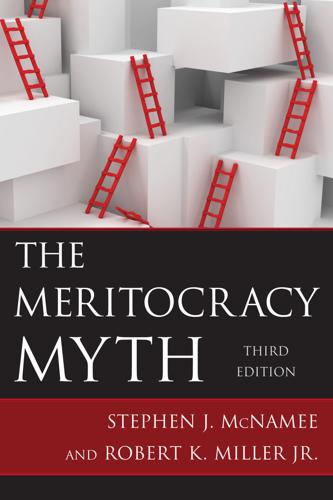
The Meritocracy Myth
by
Stephen J. McNamee
Published 17 Jul 2013
That is, social capital enhances the likelihood of a person’s attaining educational, occupational, and entrepreneurial success. The Strength of Weak Ties A substantial body of research also confirms the direct effects of social capital on adult success (cf. Campbell and Rosenfeld 1985; Granovetter 1973; Lin 1999, 2000a, 2000b; Lin and Erickson 2008; Portes 1998; McDonald, Lin, and Ao 2009). Social capital affects access to job opportunities, mobility through occupational ladders, promotions, earnings, and entrepreneurial success. In analyzing the effects of social capital on adult success, sociologist Mark Granovetter (1973, 1983) documented the importance of what he referred to as the “strength of weak ties.” In terms of having access to new sources of information, Granovetter showed that it is often better to have a larger number of casual acquaintances (weak ties) than to know just a few people very well (strong ties).
…
British Journal of Sociology 2:294–304. ———. 1959. The Presentation of Self in Everyday Life. Harmondsworth, UK: Pelican. ———. 1967. Interaction Ritual. New York: Pantheon. Granovetter, Mark S. 1973. “The Strength of Weak Ties.” American Journal of Sociology 78:1360–80. ———. 1974. Getting a Job: A Study of Contacts and Careers. Cambridge, MA: Harvard University Press. ———. 1983. “The Strength of Weak Ties: A Network Theory Revisited.” Sociological Theory 1:201–33. Johnston, David Cay. 2005. “Richest Are Leaving Even the Rich Far Behind.” In Class Matters, ed. New York Times, 182–91. New York: Times Books.

Break Through: Why We Can't Leave Saving the Planet to Environmentalists
by
Michael Shellenberger
and
Ted Nordhaus
Published 10 Mar 2009
Where strong ties among people were once important, weak ties are now more effective. Where old social structures were once nurturing, now they are restricting . . . People want diversity, low entry barriers and the ability to be themselves.14 The seminal articulation of this phenomenon was in sociologist Mark Granovetter’s 1973 paper “The Strength of Weak Ties.” In it, Granovetter concluded that weak ties help far more than strong ties in getting a job, innovating, or starting a new business. Where strong ties offer depth, weak ties offer breadth.15 There is even evidence that the revered strong ties of the older industrial economy often served to exclude outsiders, whether immigrants or Americans migrating from outside the area, from employment and other economic opportunities.
…
In signing up for a small group one must commit to participate for roughly two months, but church officials say that 70 percent of the members continue for years beyond that. Today, an estimated forty million Americans are involved in a religious small group. What Warren has done, and done brilliantly, is maximize the strength of weak ties through his congregation, the ultimate hub of multiple networks, and convert some of those weak ties into strong ties through his small groups. “People are not looking for friendly churches,” Warren says on his Web site, Pastors.com, “they are looking for friends.”22 Traditional evangelical preachers disapprove.
…
Brashears, “Social Isolation in America: Changes in Core Discussion Networks over Two Decades,” American Sociological Review, June 2006, 353–73. [back] 13. Richard Florida, The Rise of the Creative Class (New York: Perseus, 2002) , 8. [back] 14. Ibid., 269. [back] 15. Mark Granovetter, “The Strength of Weak Ties,” American Journal of sociology, May 1973, 1360–80. Also see discussion in Florida, Rise, 276. [back] 16. Florida, Rise, 277. [back] 17. Ibid., 281. [back] 18. Ibid., 269. [back] 19. Malcolm Gladwell, “The Cellular Church,” The New Yorker, September 12, 2005, 63. [back] 20. Putnam, Bowling, 129.

Whiplash: How to Survive Our Faster Future
by
Joi Ito
and
Jeff Howe
Published 6 Dec 2016
John Seely Brown drew attention to the natural efficiencies these networks offered, so long as the company is willing to think differently, and popularized the strategy in a 2010 book, The Power of Pull.25 A robust web of relationships will include both weak and strong ties. In his seminal 1973 paper “The Strength of Weak Ties,” Dr. Mark Granovetter argued that weak ties—those that connect casual acquaintances and friends of friends—have the potential to bridge communities and create a sense of trust and connection between people who know each other only slightly or not at all.26 People with a wide range of weak ties therefore have more opportunities to pull resources from their networks.
…
Resources are pulled as needed: the world is going from “stocks” to “flows.” I try to set a general trajectory of where I want to go, but I also try to embrace serendipity and allow my network to provide the resources necessary to turn any random event into a highly valuable one. I embrace sociologist Mark Granovetter’s theory of the “strength of weak ties”: it’s those connections outside of your normal circle that often provide the most value. But serendipity is not luck. It is a combination of creating a network and an environment rich with weak ties, a peripheral vision that is “switched on,” and an enthusiasm for engagement that attracts and encourages interaction.
…
The New Yorker, October 10, 2011. 24 Ethan Zuckerman, “The Death of Tidbit and Why It Matters,” … My Heart’s in Accra, May 28, 2015, http://www.ethanzuckerman.com/blog/2015/05/28/the-death-of-tidbit-and-why-it-matters/. 25 John Hagel III, John Seely Brown, and Lang Davison, The Power of Pull: How Small Moves, Smartly Made, Can Set Big Things in Motion, (New York: Basic Books, 2012) 26 Mark S. Granovetter, “The Strength of Weak Ties,” American Journal of Sociology 78, no. 6 (1973): 1360–80, http://www.jstor.org/stable/2776392. 27 Malcolm Gladwell, “Small Change: Why the Revolution Will Not Be Tweeted,” New Yorker, October 4, 2010, http://www.newyorker.com/reporting/2010/10/04/101004fa_fact_gladwell?printable=true. 28 Yves-Alexandre de Montjoye et al., “The Strength of the Strongest Ties in Collaborative Problem Solving,” Scientific Reports 4 (June 20, 2014), doi:10.1038/srep05277. 29 Doug McAdam, “Recruitment to High-Risk Activism: The Case of Freedom Summer,” American Journal of Sociology 92, no. 1 (1986): 64–90, http://www.jstor.org/stable/2779717. 30 “2013 Everett M.
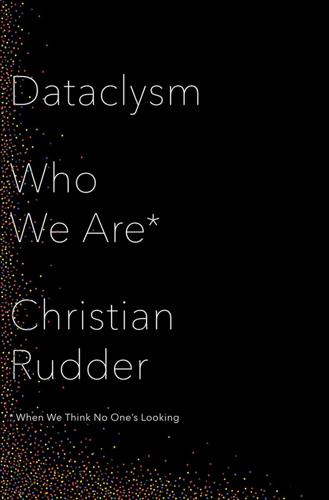
Dataclysm: Who We Are (When We Think No One's Looking)
by
Christian Rudder
Published 8 Sep 2014
I first heard of this anecdote in Jonah Lehrer’s Imagine (Edinburgh, UK: Canongate, 2012). See BuzzFeed’s “Inside Steve Jobs’ Mind-Blowing Pixar Campus,” by Adam B. Vary, for more details. Vary mind-blowingly interviews Craig Payne, a senior Pixar manager: buzzfeed.com/adambvary/inside-steve-jobs-mindblowing-pixar-campus. “the strength of weak ties” See “The Strength of Weak Ties” by Mark S. Granovetter, American Journal of Sociology 78, no. 6 (1973): 1360–80. Another long-held idea in network theory Though embeddedness was first proposed by Granovetter in 1985, my remaining discussion of embeddedness and of interpersonal network theory is drawn from the primary source behind this chapter, Backstrom and Kleinberg’s “Romantic Partnerships.”
…
Today, network theory, working on data sets enabled by technology, shows how people can find new jobs, sort information from nonsense, and even make better movies. When they built their headquarters, Pixar famously put the only bathrooms in the building inside the central atrium to force interdepartmental small talk, knowing that innovation often comes from the serendipitous collision of ideas. Theirs was an application of “the strength of weak ties,” a concept postulated in the 1970s with samples in the dozens, but since amplified on new, robust network data: it tells us that it’s the people you don’t know very well in your life who help ideas, especially new ones, spread.2 Another long-held idea in network theory is “embeddedness.”

What's Mine Is Yours: How Collaborative Consumption Is Changing the Way We Live
by
Rachel Botsman
and
Roo Rogers
Published 2 Jan 2010
As cofounder Dan Hoffer, puts it, “The more we network and the more we understand each other, the better chance we have of this world being a better place.” CouchSurfing is an excellent illustration of how peripheral relationships created through collaborative lifestyles can powerfully bind us together. Mark Granovetter, a sociologist at Stanford University, named this force “the strength of weak ties,”32 social relationships of people whom we don’t know that can bolster an individual’s prospects and well-being.33 It is estimated that more than 111,186 close friendships have been created through CouchSurfing and approximately 18 percent of visits are reciprocated directly.34 When you talk to CouchSurfers, they regale you with stories of kindness and of meeting people they otherwise would have not met as a regular tourist.
…
Q&A with Cindy Gallop: “Tackling Porn, Feminism and Big Dreams,” TED blog (December 2, 2009), http://blog.ted.com/2009/12/qa_with_cindy_g.php. 47. Thomas Friedman, “The Inflection Is Near?” New York Times (March 7, 2009), www.nytimes.com/2009/03/08/opinion/08friedman.html?_r=1. 1. The concept of “weak ties” was developed in Mark Granovetter “The Strength of Weak Ties,” American Journal of Sociology 78, no. 6 (May 1973): 1360–1380. 2. Michael Tomasaello’s research and new book Why We Cooperate were covered in Nicholas Wade, “Why We May Be Born with an Urge to Help,” New York Times (November 30, 2009), www.nytimes.com/2009/12/01/science/01human.html?
…
Retrieved November 2009, www.CouchSurfing.org/about.html/mission. 31. Statistics retrieved February 2010 from www.CouchSurfing.org/index.html. 32. Jeff Miranda, “Take the Couch,” Boston Globe (August 22, 2007), www.boston.com/yourlife/articles/2007/08/22/take_the_couch/. 33. Mark Granovetter, “The Strength of Weak Ties,” American Journal of Sociology 78, no. 6 (May 1973): 1360–1380. 34. Debra Lauterbach, Hung Truong, Tanuj Shah, and Lada Adamic, “Surfing a Web of Trust: Reputation and Reciprocity on CouchSurfing.com,” IEEE International Conference 4 (2009): 348. 35. Traveler CouchSurfing story from Lisa Lubin, “You Meet the Darndest People While CouchSuring,” Chicago Tribune (August 9, 2009), www.chicagotribune.com/travel/chi-0809-couch-surfingaug09,0,208222.story. 36.
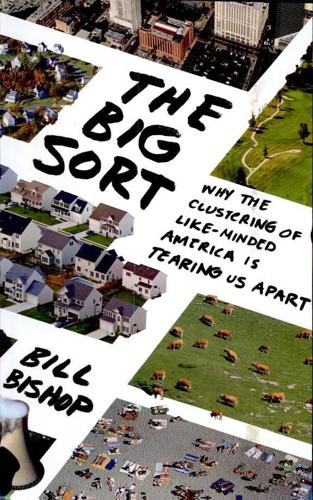
The Big Sort: Why the Clustering of Like-Minded America Is Tearing Us Apart
by
Bill Bishop
and
Robert G. Cushing
Published 6 May 2008
Granovetter asked his subjects how often they saw the person who had told them about the job. Only 17 percent of those newly employed people said they were often in contact with their source, 56 percent said they occasionally saw their source, and 28 percent said they saw their source rarely. Granovetter described this phenomenon as the "strength of weak ties." The more bridges connecting a person to others, no matter how tenuous or seldom used, the better his or her chances for employment. The same would hold true for a community, Granovetter proposed. Communities with lots of internal bridges, even if they were flimsy ones, would be better off than places with social groups that were tightly knit internally but unconnected to other groups in the community.41 Historian Peter Hall examined the dynamic cities in history—Manchester, England, in the late eighteenth and early nineteenth centuries, San Francisco in the second half of the twentieth century, Berlin from 1840 to 1930—and found that they were constructed on the strength of weak ties.
…
Communities with lots of internal bridges, even if they were flimsy ones, would be better off than places with social groups that were tightly knit internally but unconnected to other groups in the community.41 Historian Peter Hall examined the dynamic cities in history—Manchester, England, in the late eighteenth and early nineteenth centuries, San Francisco in the second half of the twentieth century, Berlin from 1840 to 1930—and found that they were constructed on the strength of weak ties. "Most of these places seem to have had egalitarian social structures: they were unstuffy, un-classbound, non-hierarchical places," Hall wrote.42 At the turn of the twentieth century, all the newly discovered technology in the entertainment industry—pictures that both moved and talked—was located in New York, along with most of the country's acting talent.
…
Paul Romer, "Innovation: The New Pump of Growth," Blueprint: Ideas for a New Century, Winter 1998. 39. Jacobs, The Economy of Cities, pp. 85–121. 40. Robert E. Lucas Jr., "On the Mechanics of Economic Development," Journal of Monetary Economics 22 (1988). 38–39. 41. Mark S. Granovetter, "The Strength of Weak Ties," American Journal of Sociology 78, no. 6 (May 1973): 1360–80. 42. Peter Hall, Cities in Civilization (New York: Fromm International, 1998), p. 494. 43. Ibid., pp. 526–35. 44. AnnaLee Saxenian, Regional Advantage: Culture and Competition in Silicon Valley and Route 128 (Cambridge, MA: Harvard University Press, 1994).
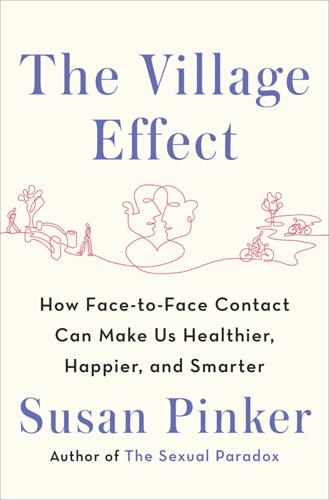
The Village Effect: How Face-To-Face Contact Can Make Us Healthier, Happier, and Smarter
by
Susan Pinker
Published 30 Sep 2013
Grippo et al., “Oxytocin Protects against Negative Behavioral and Autonomic Consequences of Long-Term Social Isolation,” Psychoendocrinology 34 (2009). 39. Mark Granovetter, “The Strength of Weak Ties,” American Journal of Sociology 78 (1973). 40. Abraham Verghese, My Own Country: A Doctor’s Story (New York: Vintage, 1994). 41. Sincere thanks go to Globe and Mail health reporter and Montreal bureau chief André Picard. 42. Mark Granovetter, “The Strength of Weak Ties: A Network Theory Revisited,” Sociological Theory 1 (1983). 43. R. F. Baumeister, Is There Anything Good about Men? (New York: Oxford University Press, 2010); Joyce Benenson and Anna Heath, “Boys Withdraw More in One-on-One Interactions, Whereas Girls Withdraw More in Groups,” Developmental Psychology 42, no. 2 (2006); R.
…
First, it’s our weaker connections who are often most influential when we need something concrete—a new job, a new doctor, a new apartment. Such important bits of information usually come our way through people we’re only loosely connected to, a principle proved many times since Stanford sociologist Mark Granovetter first proposed his idea about “the strength of weak ties” in the early 1970s.39 The reason we’re most likely to find a great surgeon, our dream job, or Ms. or Mr. Right through a friend or a colleague’s spouse, or a spouse’s colleague is that we already share so much of what we know with our family and close friends. Our backgrounds, networks, and interests are similar, so our sources of gossip overlap.
…
Van Alstyne, “Networks, Information and Social Capital,” paper presented at the International Conference on Network Science, New York, 2007. 53. Lynn Wu et al., “Mining Face-to-Face Interaction Networks Using Sociometric Badges: Predicting Productivity in an IT Configuration Task,” Proceedings of the 29th International Conference on Information Systems, Paris, 2008 (ICIS: 2009); Mark Granovetter, “The Strength of Weak Ties: A Network Theory Revisited,” Sociological Theory 1 (1983). 54. Daniel Olguín Olguín, Peter A. Gloor, and Alex Pentland, “Capturing Individual and Group Behavior with Wearable Sensors,” paper presented at the Association for the Advancement of Artificial Intelligence Spring Symposium, Palo Alto, Calif., March 2009; Pentland, “To Signal Is Human”; Alex Pentland, Honest Signals: How They Shape Our World (Cambridge, Mass.: MIT Press, 2008). 55.
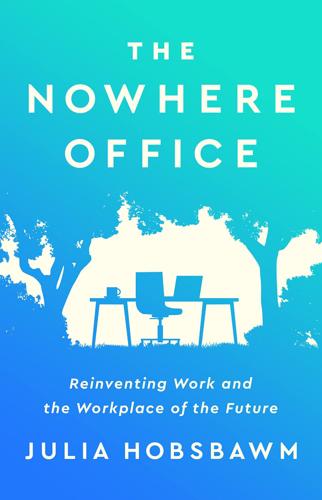
The Nowhere Office: Reinventing Work and the Workplace of the Future
by
Julia Hobsbawm
Published 11 Apr 2022
A network can emerge from almost anywhere, but it must emerge from somewhere – a cocktail party, a chance encounter at the elevator or in the airport lounge. Conversations that might appear to be marginal can end up being vital: the periphery can often be as important as the centre. Network science is all about the distance between hubs and nodes, and for people a famous study by the sociologist Mark Granovetter in 1973 entitled ‘The Strength of Weak Ties’ showed that the informal, peripheral connections such as a social introduction rather than formal job application were often more successful.10 During one of the several long lockdowns I bumped into Rohan Candappa, a British writer and director with Sri Lankan heritage, in our local park.
…
‘Virtual Events Market Size, Share & Trends Analysis Report by Event Type, by Service, by Establishment Size, by End-use, by Application, by Industry Vertical, by Use-case, by Region, and Segment Forecasts, 2021–2028’, Grand View Research, July 2021, https://www.grandviewresearch.com/industry-analysis/virtual-events-market 10. Mark S. Granovetter, ‘The Strength of Weak Ties’, American Journal of Sociology, 78 (6): 1360–80, May 1973, https://www.jstor.org/stable/2776392 11. Rob Cross, ‘Introduction to Organizational Network Analysis’, https://gates.comm.virginia.edu/rlc3w/sna.htm 12. Rob Cross, Kevin Oakes, and Connor Cross, ‘Cultivating an Inclusive Culture Through Personal Networks’, MIT Sloan Management Review, 8 June 2021, https://sloanreview.mit.edu/article/cultivating-an-inclusive-culture-through-personal-networks/ 13.
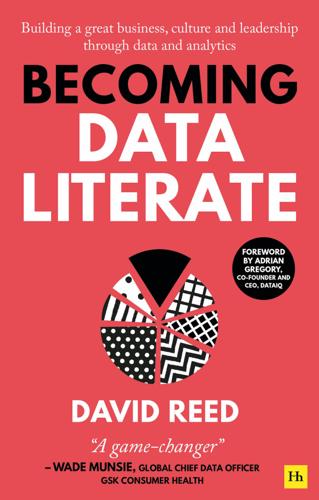
Becoming Data Literate: Building a great business, culture and leadership through data and analytics
by
David Reed
Published 31 Aug 2021
Data teams should be encouraged to engage with activities within the business, not just within the data department, to support this goal. DataIQ Way Marker Information flows better across weak bridges The strength of weak ties One compelling reason for encouraging data teams to interact beyond their direct peer group – indeed, beyond their comfort zone – is the strength of weak ties. This sociological concept was first put forward in 1973 by Mark S. Granovetter at Johns Hopkins University. He identified that most studies of social networks had looked at the strength of ties within formal groups at a micro-level.

Model Thinker: What You Need to Know to Make Data Work for You
by
Scott E. Page
Published 27 Nov 2018
We construct micro-level processes that produce the network structures we see. Last, we take up function, the question of why network structure matters. Here we focus on five implications. We begin with the friendship paradox, and then describe the six degrees of separation phenomenon and the strength of weak ties property. Last, we take up the robustness of networks to node or edge failure and the aggregation of information over networks. The chapter concludes with a discussion of how networks influence model outcomes. Network Structure A network consists of nodes and edges that connect them.
…
Figure 10.3: A Node’s Clique Friends (C) and Random Friends (R) These random friends might also be thought of as weak ties—people who connect you to other communities of people. Our weak ties, the random friends in our network, play an important informational role by connecting communities with diverse interests and information. Hence, sociologists speak of the strength of weak ties.12 This construction allows us to calculate the number of neighbors of degree two (the friends of friends), by adding up all of the friends of random friends but only adding the random friends of the clique friends. We do not count the clique friends of the clique friends, as they are members of the node’s clique.
…
The educational attribute captures public spending on education, which empirically correlates with average income: high-income locations spend more on education than low-income locations, resulting in better educational outcomes and higher incomes for children in high-income neighborhoods. The spillover term can be interpreted as socially transmitted knowledge of appropriate tools to acquire. Here we can link Durlauf’s model to how people who live in high-income communities gain awareness of appropriate tools. We can also link the model to our network model and the strength of weak ties phenomenon: people who live in high-income communities will be connected indirectly to more people with access to economically valuable information. This will produce a positive feedback on income. We can also interpret the spillover as socially transmitted behaviors, such as the number of hours spent studying or working.
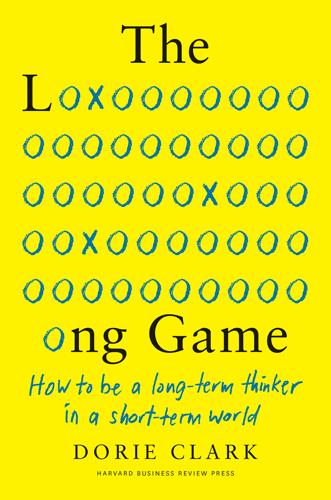
Long Game: How Long-Term Thinker Shorthb
by
Dorie Clark
Published 14 Oct 2021
Research by professor Jeffrey Hall at the University of Kansas shows that it takes about fifty hours of exposure to move someone from acquaintance to casual friend, another ninety hours to move them up to actual friend status, and more than two hundred hours to turn someone into a close friend.1 Who has time like that these days? But even the relationships you form with casual acquaintances can be transformative (a principle discussed in the sociologist Mark Granovetter’s seminal 1973 paper “The Strength of Weak Ties”2). I met a woman back in 2015 when she was invited to a dinner by my cohosts. Since then, I’ve invited her to a couple additional dinners, and she’s hosted me on her podcast and interviewed me for her book—a pleasant but light connection. Meanwhile, she referred me to a business opportunity that has brought in more than $1.1 million over the past five years.
…
K., 161 Ruxton, Adam, 76–78 Ryan, Christina, 85 safety busyness and, 24 exploration and, 78–80 goal setting and, 67 pursuing your interests and, 62 saying no, 14, 26–27, 31–49 asking yourself questions for, 44–48 clarity on your north star and, 37–39 deciding what to be bad at and, 39–41 “Hell yeah or no” strategy for, 35–37 why we don’t, 33–34 Sehgal, Kabir, 147–148 self-assessments, 96, 221 self-control, 193–196 self-doubt, 167, 189 seven-year horizon, 199–201 shifting baseline syndrome, 202–203 shiny object syndrome, 99 Silicon Valley, 15, 180–181 Simon, Herbert, 25 Sivers, Derek, 26, 35, 166–167 social media comparisons on, 3, 10 content creation for, 103–105, 118–119 social proof, 126, 127 social status, 22–23, 26 Someday Is Not a Day in the Week (Horn), 188 Soo, Selena, 147 SpaceX, 78 speaking professionally, 4, 143–146, 178–179 Stand Out (Clark), 29, 73, 125, 219 Stoddart, Marion, 57–58 strategic leverage, 112, 115–128 strategic overindexing, 96–98 strategic patience, 11, 15, 159–172 definition of, 165 exponential growth and, 165–167 rejection and, 162–165 when things seem bleak, 167–171 strategic thinking, 21, 25, 30 strategy, revisiting, 169 “The Strength of Weak Ties” (Granovetter), 132 success, 12–16 based on previous success, 25 defining for yourself, 19 as a distraction, 109 finding alternatives and, 184–187 involving your community in, 188–190 knowing what it takes for, 168–170 moving on from, 110–112 multiple paths to, 181–184 other’s views of, 123–124 “overnight,” 159–161 personal definitions of, 201–203 putting a date on, 187–188 redefining, 3 shifting baseline syndrome and, 202–203 strategic thinking and, 21 talent and, 12 understanding what it takes, 196 Sugar, Anne, 163–164 sweat equity, 150 TBWA/Chiat/Day, 203–204 Ted Nash Big Band, 148 Tesla, 78 Thinkers50, 118–119, 179–180 thinking magical, 28 making time for, 14 others’, forgetting about, 63–65 space for, 29–30 strategic, 21, 25, 30 unconscious, 117–118 in waves, 14, 95–113 3M, 75 time, 1–3 busyness and, 21–30 choices about, 11 clearing the decks for, 14, 19 expansion of work to fill, 34 for exploration, 73–93 inefficient use of, 28 for innovation, 7 leveraging, 116–118 for networking, 132 for opportunities, creating, 82–85 for resetting, 198 seven-year horizon and, 199–201 for thinking, 14 tracking, 115–116 The Tim Ferriss Show (podcast), 23 To Be Honest (Carucci), 161 to-do lists, 28–29 Triggers (Goldsmith), 110 20% time, 14, 74–78, 82–85, 92 Uncommon Service (Frei & Morriss), 40–41 values, 168 character and, 209–210 evaluating opportunities based on, 37–39 setting goals based on, 65–67 Vanderkam, Laura, 116 van de Wiel, Mary, 37–38 Van Nostrand, Phil, 120, 121–122, 123–124 Vanuatu, 84–85 Velasquez, Luis, 67–69 Wagner, T.
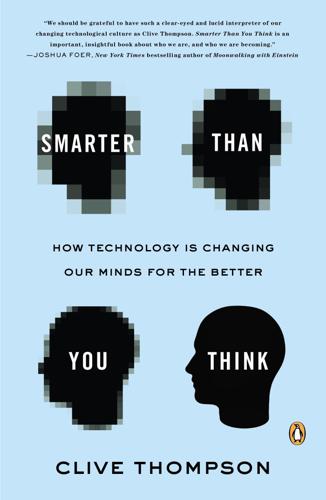
Smarter Than You Think: How Technology Is Changing Our Minds for the Better
by
Clive Thompson
Published 11 Sep 2013
the “aerial” man . . . mobile phones: Langdon Winner, “Sow’s Ears from Silk Purses,” in Technological Visions: Hopes and Fears That Shape New Technologies, eds. Marita Sturken, Douglas Thomas, and Sandra Ball-Rokeach (Philadelphia: Temple University Press, 2004), 34, 36. “The Strength of Weak Ties”: Mark S. Granovetter, “The Strength of Weak Ties,” American Journal of Sociology 78, no. 6 (May 1973): 1360–80, accessed March 26, 2013, sociology.stanford.edu/people/mgranovetter/documents/granstrengthweakties.pdf; Mark Granovetter, Getting a Job: A Study of Contacts and Careers (Chicago: University of Chicago Press, 1995), 10–22, 51–53.
…
It’s even less likely that a distant link would be exposed to your stray observations, like “Wow, there’s WiFi in this subway station.” In a world of status updates, tangential, seemingly minor ties become part of your social fabric. And they can bring in some extremely useful information. In 1973, sociologist Mark Granovetter gave a name to this powerful process: “The Strength of Weak Ties.” Granovetter had spent time researching the ways in which people found new jobs. After surveying hundreds of job finders, he discovered there were three main strategies. You could use formal means, by responding to job advertisements. You could try direct application, cold-calling companies to see if they had any openings.
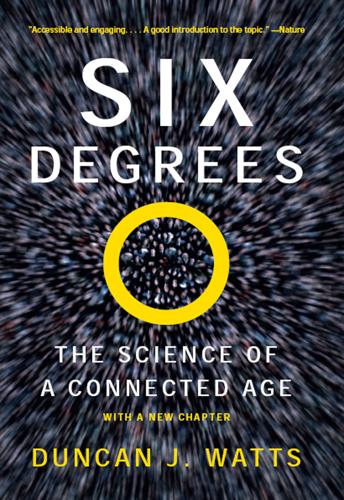
Six Degrees: The Science of a Connected Age
by
Duncan J. Watts
Published 1 Feb 2003
After completing an extensive study of two Boston communities whose attempts to mobilize against the threat of urban development had starkly different outcomes, Granovetter came to the surprising conclusion that effective social coordination does not arise from densely interlocking “strong” ties. Rather it derives from the presence of occasional weak ties between individuals who frequently didn’t know each other that well or have much in common. In his seminal 1973 paper, he called this effect “the strength of weak ties,” a beautiful and elegant phrase that has since entered the lexicon of sociology. Granovetter later showed a similar correlation between weak ties and an individual’s prospects of getting a job. Job hunting, it turns out, is not just a matter of having a friend to get you in the door—precisely what sort of friend they are is of great importance.
…
Structural Holes: The Social Structure of Competition (Harvard University Press, Cambridge, MA, 1992). Davis, J. A. Structural balance, mechanical solidarity, and interpersonal relations. American Journal of Sociology, 68(4), 444–462 (1963). Freeman, L. C. A set of measures of centrality based on betweenness. Sociometry, 40, 35–41 (1977). Granovetter, M. S. The strength of weak ties. American Journal of Sociology, 78, 1360–1380 (1973). Harary, F. Graph theoretic measures in the management sciences. Management Science, 5, 387–403 (1959). Holland, P. W., and Leinhardt, S. An exponential family of probability distributions for directed graphs. Journal of the American Statistical Association, 76, 33–65 (1981).
…
Journal of Mathematical Sociology, 17(4), 281–302 (1993). ———. The dynamics of social dilemmas. Scientific American, 270(3), 76–81 (1994). Glover, P. Grassroots economics. In Context, 41, 30 (1995). Granovetter, M. Threshold models of collective behavior. American Journal of Sociology, 83(6), 1420–1443 (1978). Granovetter, M. S. The strength of weak ties. American Journal of Sociology, 78, 1360–1380 (1973). Grossman, J. W., and Ion, P. D. F. On a portion of the well-known collaboration graph. Congressus Numerantium, 108, 129–131 (1995). Guare, J. Six Degrees of Separation: A Play (Vintage Books, New York, 1990). Harary, F. Graph theoretic measures in the management sciences.
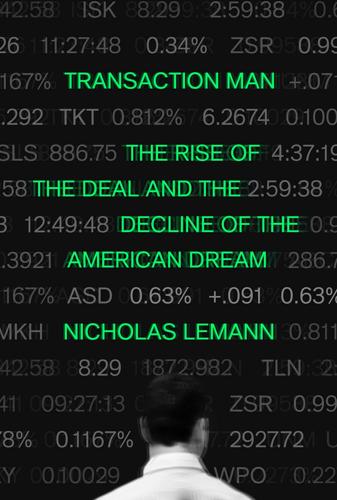
Transaction Man: The Rise of the Deal and the Decline of the American Dream
by
Nicholas Lemann
Published 9 Sep 2019
Six Degrees: Jeffrey Travers and Stanley Milgram, “An Experimental Study of the Small World Problem,” Sociometry, Volume 32, Number 4 (December 1969), 425–43. Academics had been studying social networks: See Jacob Moreno, Who Shall Survive? Foundations of Sociometry, Group Psychotherapy and Sociodrama, Beacon, 1953. “The Strength of Weak Ties”: Mark S. Granovetter, “The Strength of Weak Ties,” American Journal of Sociology, Volume 78, Number 6 (May 1973), 1360–80. “much as levies were imposed”: Hoffman, Blitzscaling, 84. As a young engineer: Author’s interview with Bob Metcalfe. “First prize is a Cadillac Eldorado”: Hoffman, Blitzscaling, 11. In 2014 Hoffman and two of his protégés: See Reid Hoffman, Ben Casnocha, and Chris Yeh, The Alliance: Managing Talent in the Networked Age, Harvard Business Review Press, 2014.
…
But Silicon Valley doesn’t have the same kind of direct connection to these theories as it does to the academic work in computer science that made all of the Valley’s businesses possible. Along with Milgram’s paper, the academic work about social networks that people in the Valley mention most often is a 1973 paper by the sociologist Mark Granovetter, called “The Strength of Weak Ties,” which shows how consequential nonobvious, non-immediate linkages can be in people’s lives. The paradoxical title means that one can often make more useful connections through people one doesn’t know well—that is, through weak ties—than through people one knows intimately based on shared membership in an enclosed, tight-knit community.
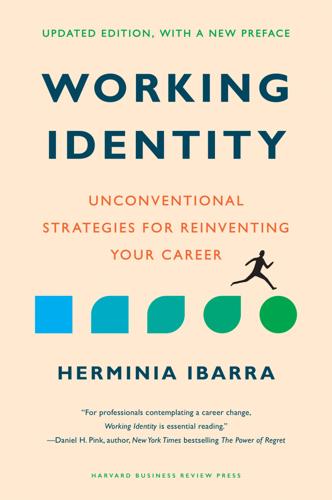
Working Identity, Updated Edition, With a New Preface: Unconventional Strategies for Reinventing Your Career
by
Herminia Ibarra
Published 17 Oct 2023
Dutton, “Threat Rigidity Effects in Organizational Behavior: A Multilevel Analysis,” Administrative Science Quarterly 26, no. 4 (1981): 501–524. Chapter 6 1. Robert J. Lifton, The Protean Self: Human Resilience in an Age of Fragmentation (Chicago: University of Chicago Press, 1993), 120. 2. Mark S. Granovetter, “The Strength of Weak Ties,” American Journal of Sociology 78, no. 6 (1973): 1360–1380; and Getting a Job: A Study in Contacts and Careers, 2nd ed. (Chicago: University of Chicago Press, 1995). His insights have been validated with data from multiple large-scale randomized experiments on LinkedIn’s People You May Know algorithm, which recommends new connections to LinkedIn members, to test the extent to which weak ties increased job mobility in the world’s largest professional social network.
…
His insights have been validated with data from multiple large-scale randomized experiments on LinkedIn’s People You May Know algorithm, which recommends new connections to LinkedIn members, to test the extent to which weak ties increased job mobility in the world’s largest professional social network. Analyses of over 20 million users showed that indeed weak ties are how we get jobs and change careers. See Rajkumar Kartik, Guillaume Saint-Jacques, Iavor Bojinov, Erik Brynjolfsson, and Sinan Aral, “A Causal Test of the Strength of Weak Ties,” Science 377, no. 6612 (2022): 1304–1310. 3. See Daniel Z. Levin, Jorge Walter, and J. Keith Murnighan, “The Power of Reconnection—How Dormant Ties Can Surprise You,” MIT Sloan Management Review, March 2011, 45. 4. Roy F. Baumeister, Identity: Cultural Change and the Struggle for Self (New York: Oxford University Press, 1986). 5.
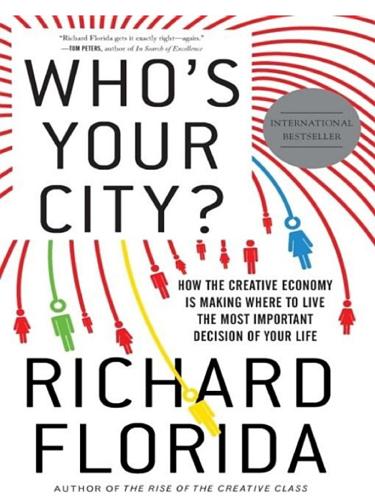
Who's Your City?: How the Creative Economy Is Making Where to Live the Most Important Decision of Your Life
by
Richard Florida
Published 28 Jun 2009
In her study of the high-tech industry in Silicon Valley and on Route 128 outside Boston, Berkeley’s AnnaLee Saxenian found that the resilience and superior performance of Silicon Valley companies during the 1990s turned on the adaptive capabilities of the region’s decentralized but cooperative networks of entrepreneurs, venture capitalists, technologists, and newly minted university talent.19 No matter what form it takes, networking reflects what Stanford University sociologist Mark Granovetter calls “the strength of weak ties,” a remarkable phrase that captures the essence of what’s going on.20 In a widely influential study that examined how people find jobs, Granovetter concluded that it is our numerous weak ties, rather than our fewer strong ones, that really matter. The idea that proximity to total strangers is more important than connections to lifelong friends may seem strange, until you think about how networks function.
…
Putnam, Bowling Alone: The Collapse and Revival of American Community, Simon & Schuster, 2000. 18 Andrew Hargadon, “Bridging Old Worlds and Building New Ones: Toward a Micro-sociology of Creativity,” in Leigh Thompson, ed., Creativity and Innovation in Groups and Teams, Erlbaum, 2007. 19 AnnaLee Saxenian, Regional Advantage, Harvard University Press, 1994. 20 Mark Granovetter, “The Strength of Weak Ties,” American Journal of Sociology 78, 6, May 1973, pp. 1360-1380. 21 Richard Caves, Creative Industries: Contracts Between Art and Commerce, Harvard University Press, 2002. See also Elizabeth Currid’s detailed analysis of the interweaving of design, music, and art scenes in contemporary New York, The Warhol Economy, Princeton University Press, 2007. 22 See Terry Nichols Clark, “Making Culture into Magic: How Can It Bring Tourists and Residents?”
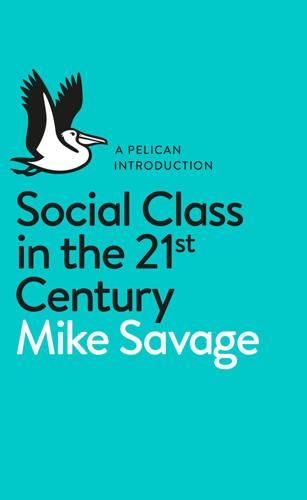
Social Class in the 21st Century
by
Mike Savage
Published 5 Nov 2015
The mother was understandably very unhappy about this, and saw her son’s university education as nearly a total waste. However, we should not get too hung up on this ‘pulling of strings’. In one of the most famous pieces of sociological research ever conducted Mark Granovetter emphasized the ‘strength of weak ties’.3 Although we might think that it is those who are closest to us – our family and intimate friends – who matter most in affecting our lives, Granovetter argued that in fact it was those whom we know in passing who are more likely to convey benefits to us. This is because, by being more removed from our daily activities, they are more likely to have information which will assist us and which we otherwise would not know about.
…
Bjørn Schiermer, ‘Late-modern Hipsters: New Tendencies in Popular Culture’, Acta Sociologica, 57(2), 2014, 167–81. CHAPTER 4: SOCIAL CAPITAL: NETWORKS AND PERSONAL TIES 1. Robert Putnam, Bowling Alone (New York: 2000). 2. David Halpern, Social Capital (Cambridge: 2004); Richard G. Wilkinson, Unhealthy Societies: The Afflictions of Inequality (London: 1996). 3. Mark Granovetter, ‘The Strength of Weak Ties’, American Journal of Sociology, 78(6), 1973. This is one of the most cited sociological articles of all time. 4. Ronald Burt, ‘The Network Structure of Social Capital’, in B. Staw and R. Sutton (editors), Research in Organizational Behaviour, vol. 22 (Greenwich, CT: 2000), pp. 345–423; S.
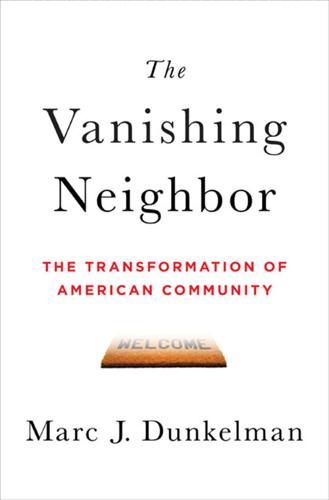
The Vanishing Neighbor: The Transformation of American Community
by
Marc J. Dunkelman
Published 3 Aug 2014
Or, to put it differently, which sorts of acquaintances are more likely, as Ronald Burt said, to put individuals at the “greatest risk” of having good ideas? In an effort to answer that question, Mark Granovetter, who is now a professor at Stanford, published a paper in 1973 that contained one of the most enduring phrases of twentieth-century sociology: “the strength of weak ties.”23 When it comes both to career advancement and, more importantly, to the spread of innovative concepts, Granovetter argued that the connections we maintain with our close contacts are not nearly as important as the breadth of our extended networks. Economic dynamism, in essence, emerges less in the cliques that watch Monday Night Football together than in the longer list of contacts we each maintain in our virtual rolodexes.
…
Fowler, Connected: The Surprising Power of Our Social Networks and How They Shape Our Lives—How Your Friends’ Friends’ Friends Affect Everything You Feel, Think, and Do (New York: Back Bay Books, 2009), 162–4; Brian Uzzi and Jarrett Spiro, “Collaboration and Creativity: The Small World Problem,” American Journal of Sociology 111, no. 2 (September 2005): 447–504. 20Jane Jacobs, The Economy of Cities (New York: Vintage: 1970), 85–93, 96–97, 181. 21Jacobs, The Economy of Cities, 142. 22Jacobs, The Economy of Cities, 55. 23Mark S. Granovetter, “The Strength of Weak Ties,” American Journal of Sociology 78, no. 6 (May 1973): 1360–80. Granovetter’s paper predates Burt’s work by decades; nevertheless, they were both focused on the same question. 24Johnson, Where Good Ideas Come From, 61. 25Sean Safford, Why the Garden Club Couldn’t Save Youngstown (Cambridge, Mass.: Harvard University Press, 2009), 15–16. 26Safford, Why the Garden Club Couldn’t Save Youngstown, 22, 31–32, 63–68. 27Safford, Why the Garden Club Couldn’t Save Youngstown, 83, 92–95. 28Locke, Remaking the Italian Economy, 134. 29Michael Mandel, “The Failed Promise of Innovation in the U.S.,” Bloomberg Businessweek, June 3, 2009. 30Tyler Cowen, The Great Stagnation (New York: Dutton, 2011). 31http://news.cnet.com/8301-31921_3-20096067-281/peter-thiel-thinks-tech-innovation-has-stalled/. 32Edward Glaeser, Triumph of the City: How Our Greatest Invention Makes Us Richer, Smarter, Greener, Healthier, and Happier (New York: Penguin Press, 2011). 33Richard Florida, The Rise of the Creative Class: And How It’s Transforming Work, Leisure, Community and Everyday Life (New York: Basic Books, 2002). 34Elsa Brenner, “In Westchester County, the Platinum Mile Is Reinvented, Again,” New York Times, January 3, 2012. 35Charles V.

The Warhol Economy
by
Elizabeth Currid-Halkett
Published 15 Jan 2020
More theoretically, scholars have been concerned with answering the broader question: How does human interaction advance careers, disseminate ideas, and fundamentally propel economic vitality? In the late 1960s, Mark Granovetter, then a doctoral student in Harvard University’s sociology department, wrote a paper discussing the importance of what he calls “weak ties.” As the story goes, Granovetter submitted the paper, “The Strength of Weak Ties,” to the American Sociological Review, a top journal in the profession, where it was, as he explained to me, “indeed rejected, and very vigorously so . . . I still have the reviews, though I have no idea who wrote them.” One of the reviewers so kindly told Granovetter, “Of the innumerable problems with this paper, I will enumerate the first eight.”
…
Ecologies of Creativity: the Village, the Group and the Heterarchic Organisation of the British Advertising Industry. Environmental Planning A, 33: 351–74. ———. (2006). Trading Routes, Bypasses and Risky Intersections: Mapping the Travels of “Networks” Between Economic Sociology and Economic Geography. Progress in Human Geography 30, 2:1–27. Granovetter, Mark S. (1972). The Strength of Weak Ties. Chicago: American Journal of Sociology 78, 6:1360–1380. ———. (1985). Economic Action and Social Structure: The Problem of Embeddedness. American Journal of Sociology 81, 3: 481–510. Green, Nancy. (1997). Ready-to-Wear, Ready-to-Work: A Century of Industry and Immigrants in Paris and New York.
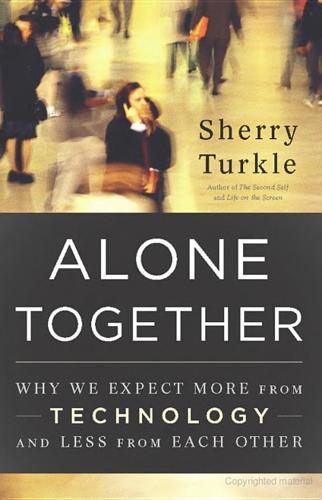
Alone Together
by
Sherry Turkle
Published 11 Jan 2011
Others think it is the worst kind of infidelity, an infidelity that involves not simply sex but talking, considering another, making plans, and building a life. 12 In online life, weak ties—the ties of acquaintanceship—are often celebrated as the best ties of all. For the seminal work on weak ties, see Mark Granovetter, “The Strength of Weak Ties,” American Journal of Sociology 78, no. 6 (1973): 1360-1380, and “The Strength of Weak Ties: A Network Theory Revisited,” Sociological Theory 1 (1983): 201-233. 13 Turkle, Life on the Screen. 14 This is sometimes referred to as “continuous partial attention,” a phrase widely credited to media researcher Linda Stone. See Stone’s blog at www.lindastone.net (accessed August 24, 2009). 15 Those who study the boundaries between work and the rest of life suggest that it is helpful to demarcate our changing roles.
…
See “Identity Workshop: Emergent Social and Psychological Phenomena in Text-Based Virtual Reality” (unpublished essay, Media Lab, Massachusetts Institute of Technology, 1992), www.cc.gatech.edu/~asb/papers (accessed September 2, 2009). 18 Sociologists distinguish between strong ties, those of family and close friendship, and weak ties, the bonds of acquaintanceship that make us comfortable at work and in our communities. Facebook and Twitter, friending rather than friendship—these are worlds of weak ties. Today’s technology encourages a celebration of these weak ties as the kind we need in the networked life. The classic work on weak ties is Mark S. Granovetter, “The Strength of Weak Ties,” American Journal of Sociology 78, no. 6 (May 1973): 1360-1380. 19 See, for example, Matt Richtel, “In Study, Texting Lifts Crash Risk by Large Margin,” New York Times, July 27, 2009, www.nytimes.com/2009/07/28/technology/28texting.html (accessed September 1, 2009). On the pressure that friends and family members put on drivers who text, see “Driver Texting Now an Issue in Back Seat,” New York Times, September 9, 2009, www.nytimes.com/2009/09/09/technology/09distracted.html (accessed September 9, 2009).

Messy: The Power of Disorder to Transform Our Lives
by
Tim Harford
Published 3 Oct 2016
In his peak collaborative year, 1987—when he was seventy-four—he formed thirty-five new creative partnerships, one every ten days.5 These collaborations bear little resemblance to the self-sacrificing commitment of the tight-knit rowing crew. They do not have to be unbreakable bonds of comradeship. In fact, they rarely are—with five hundred people involved, how could they be? In 1973, Mark Granovetter, an American sociologist, introduced the paradoxical idea of “the strength of weak ties.” Granovetter looked at a simple sociological question: How do people with good jobs find those jobs? To answer it, he did something new: he looked at the structure of their social networks. After all, as the cliché goes: it’s not what you know, but who. Granovetter observed that the most irreplaceable social connections were the distant ones.
…
The Erdős number graph continues to evolve because mathematicians continue to publish research based on their collaborations with Erdős, crediting him as a coauthor. 6. Jukka-Pekka Onnela et al., “Analysis of a Large-Scale Weighted Network of One-to-One Human Communication,” February 19, 2007, arxiv.org/pdf/physics/0702158.pdf. 7. Mark Granovetter, “The Strength of Weak Ties,” American Journal of Sociology 78, no. 6 (May 1973), pp. 1360–1380, and his Getting a Job: A Study of Contacts and Careers (Chicago: University of Chicago Press, 1974). 8. Schechter, My Brain Is Open, pp. 176–177. 9. Ibid., p. 195. 10. Mathijs de Vaan, David Stark, and Balázs Vedres, “Game Changer: The Topology of Creativity,” American Journal of Sociology 120, no. 4 (January 2015). 11.
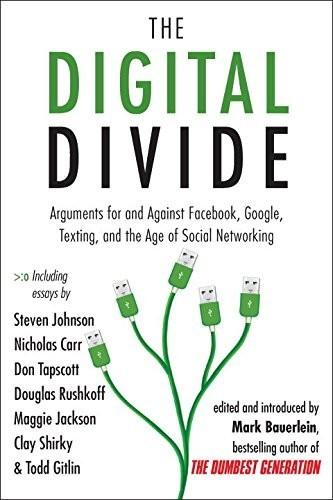
The Digital Divide: Arguments for and Against Facebook, Google, Texting, and the Age of Social Netwo Rking
by
Mark Bauerlein
Published 7 Sep 2011
In Linked: The New Science of Networks, Albert-László Barabási enthuses, “The world is shrinking because social links that would have died out a hundred years ago are kept alive and can be easily activated. The number of social links an individual can actively maintain has increased dramatically, bringing down the degrees of separation. Milgram estimated six,” Barabási writes. “We could be much closer these days to three.” What kind of “links” are these? In a 1973 essay, “The Strength of Weak Ties,” sociologist Mark Granovetter argued that weaker relationships, such as those we form with colleagues at work or minor acquaintances, were more useful in spreading certain kinds of information than networks of close friends and family. Watts found a similar phenomenon in his online small world experiment: weak ties (largely professional ones) were more useful than strong ties for locating far-flung individuals, for example.
…
See also specific sites activism and advertising on amount of users on development of identity setup on learning and marketing on politicians on privacy dangers and self-exposure through self-portraits on spam on weak ties on Social rules and norms Social saturation Social skills Socrates Solitude Sony Soundscape, cell phones and SourceForge.net South Korea Spamming, on social network sites Speech recognition Speed, Net Geners and Spengler, Oswald Splash screens Spotlight (blog) Squarciafico, Hieronimo Standage, Tom Starbucks Starkweather, Gary Star Trek (television series) Star Wars Stone, Linda Street Fighter II (video game) “The Strength of Weak Ties” (Granovetter) StyleDiary.net Suburbanization Sundance Resort Suriowecki, James Survival of the fittest Survivor (television series) Swados, Harvey Swarm intelligence Switch costs Tagging TakingITGlobal Task management Task switching Taylor, Frederick Winslow Teachout, Zephyr Techgnosis Technics and Civilization (Mumford) Techno-brain burnout Technology Education and Design (TED) Technomadicity Technorati TED.
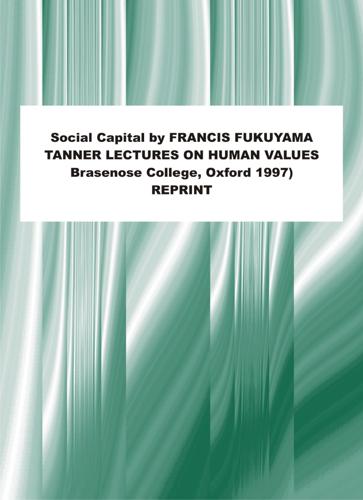
Social Capital and Civil Society
by
Francis Fukuyama
Published 1 Mar 2000
Networks in this sense are as old as human communities themselves and in many respects were the dominant form of social relationship in many premodern societies. In some sense, many of the institutions we associate with modernity, such as contract, rule of law, constitutionalism, and the institutional separation of 8 Mark S. Granovetter, “The Strength of Weak Ties,” American Journal o f S o c i o l o g y 78 (1973): 1360-80. 442 The Tanner Lectures on Human Values powers, were all designed to counteract the defects of informal network relationships. Indeed, Weber and other interpreters of modernity argued that its essence was the replacement of informal authority with law and transparent institutions. 9 So why is it, then, that anyone should believe that human organizations will in the future move away from formal hierarchies and toward informal networks?
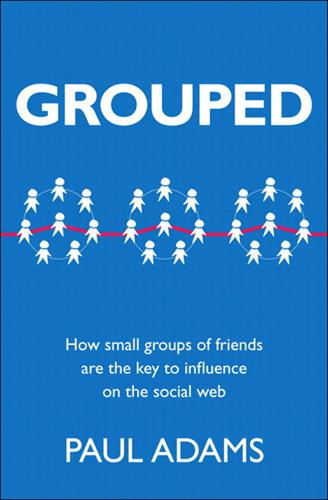
Grouped: How Small Groups of Friends Are the Key to Influence on the Social Web
by
Paul Adams
Published 1 Nov 2011
See the 2009 research paper “Effects of word-of-mouth versus traditional marketing: Findings from an internet social networking site,” by Michael Trusov, Randolph Bucklin, and Koen Pauwels. 19. See Peter Marsden’s article “Core discussion networks of Americans” in American Sociological Review, 1987. 20. See Mark Granovetter’s 1973 full research paper “The strength of weak ties.” 21. Granovetter (see Item 20) studied how people look for new jobs, and Christakis and Fowler (see Item 12) studied how people found a new piano teacher. 22. See research described by Charlene Li and Josh Bernoff in their book Groundswell (Harvard Business Press, 2008). 23. See Peter Marsden’s 1987 full research paper “Core discussion networks of Americans.” 5.

How Not to Network a Nation: The Uneasy History of the Soviet Internet (Information Policy)
by
Benjamin Peters
Published 2 Jun 2016
David Granick, Management of the Industrial Firm in the USSR: A Study in Soviet Economic Planning (New York: Columbia University Press, 1955), 229. 49. Gregory, Restructuring the Soviet Economic Bureaucracy, 173. On the sticking power of informal relations in other socially networked economies, see Mark Granovetter, “The Strength of Weak Ties,” American Journal of Sociology 78 (6) (1973): 1360–1380. 50. Gertrude Schroeder, “The Soviet Economy on a Treadmill of Reforms,” Soviet Economy in a Time of Change, U.S. Congress Joint Economic Committee (Washington, DC: USGPO, 1979). 51. Castells, The End of the Millennium, 24. 52. Loren R.
…
Cambridge: Belknap Press of Harvard University Press, 2009. Graham, Seth Benedict. “A Cultural Analysis of the Russo-Soviet ‘Anekdot.’” Ph.D. diss., University of Pittsburgh, 2003. Granick, David. Management of the Industrial Firm in the USSR: A Study in Soviet Economic Planning. New York: Columbia University Press, 1955. Granovetter, Mark. “The Strength of Weak Ties.” American Journal of Sociology 78 (6) (1973): 1360–1380. Greenhalgh, Susan. “Missile Science, Population Science: The Origins of China’s One-Child Policy.” China Quarterly 182 (2005): 253–276. Gregory, Paul R. The Political Economy of Stalinism: Evidence from the Soviet Secret Archives.
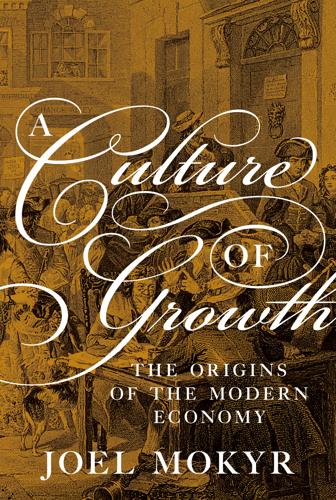
A Culture of Growth: The Origins of the Modern Economy
by
Joel Mokyr
Published 8 Jan 2016
Reprinted in Worlds Made by Words: Scholarship and Community in the Modern West. Cambridge, MA: Harvard University Press, pp. 98–113. ———. 2015. “A Hero of the European Mind.” New York Review of Books.” Nov. 19. Granovetter, Mark S. 1973. “The Strength of Weak Ties.” American Journal of Sociology Vol. 78, no. 6, pp. 1360–80. ———. 1983. “The Strength of Weak Ties: A Network Theory Revisited.” Sociological Theory Vol. 1, pp. 201–33. ———. 2005. “The Impact of Social Structure on Economic Outcomes.” Journal of Economic Perspectives Vol. 19, No.1, pp. 33–50. Grant, Edward. 2003. “The Partial Transformation of Medieval Cosmology by Jesuits in the Sixteenth and Seventeenth Centuries.”
…
Madmen, Intellectuals, and Academic Scribblers: The Economic Engine of Political Change. Stanford: Stanford University Press. Levere, T. H., and G. L’E. Turner, 2002. Discussing Chemistry and Steam: The Minutes of a Coffee House Philosophical Society 1780–1787. Oxford: Oxford University Press. Levin, Daniel Z., and Rob Cross. 2004. “The Strength of Weak Ties You Can Trust: The Mediating Role of Trust in Effective Knowledge Transfer.” Management Science Vol. 50, No. 1, pp. 1477–90. Levine, Joseph M. 1981. “Ancients and Moderns Reconsidered.” Eighteenth-Century Studies Vol. 15, No. 1, pp. 72–89. ———. 1991. The Battle of the Books: History and Literature in the Augustan Age.

Cities Are Good for You: The Genius of the Metropolis
by
Leo Hollis
Published 31 Mar 2013
Batty, M., Complexity in City Systems: Understanding, Evolution and Design, UCL Working Paper 117, March 2007, p. 2. 5. Weaver, W., ‘Science and Complexity’, American Scientist 36, 1948. 6. Ibid. 7. Jacobs, J., 1993, p. 50. 8. Koolhaas, R. et al, Mutations, ACTAR, 2000, p. 11. 9. Granovetter, M., ‘The Strength of Weak Ties: A Network Theory Revisited’, Sociological Theory, Volume 1,1983, p. 2. 10. Lehrer, J., ‘A Physicist Solves the City’, New York Times, 17 December 2010. 11. Ibid. 12. Bettencourt, L. and West, G., ‘A Unified Theory of Urban Living’, Nature, 21 October 2010. 13. Lehrer, J., 17 December 2010.
…
Lorna Spence), A Profile of Londoners by Country of Birth, GLA, February 2008 GLA Transport Committee, The Future of Road Congestion in London, GLA, June, 2011 Glaeser, E., Resseger, M. and Tobio, K., Urban Inequality, Taubman Centre for State and Local Government, 2008–10 Glaeser, E., The Triumph of the City: How Our Greatest Invention Makes Us Richer, Smarter, Greener, Healthier and Happier, Macmillan, 2011 Glaeser, E. and Kahn, M., The Greenness of Cities, National Bureau of Economic Research, August 2008 Goldsmith, S. and Elizabeth, L., What We See: Advancing the Observations of Jane Jacobs, New Village Press, 2010 Goodman, J., Laube, M. and Schwenk, J., ‘Curitiba’s Bus System is Model for Rapid Transit’, Race, Poverty & the Environment, Winter 2005–6 Graham, S., Cities Under Siege: The New Military Urbanism, Verso, 2011 Graham, S., ‘Olympics 2012 security: welcome to lockdown London’, Guardian, 12 March 2012 Graham, S. and Marvin, S., Splintering Urbanism: Networked Structures and Technological Mobilities, Routledge, 2001 Granovetter, M., ‘The Strength of Weak Ties: A Network Theory Revisited’, Sociological Theory, Volume 1, 1983 Green, J., ‘Digital Urban Renewal’, Ovum, April 2011 Grice, K. and Drakakis-Smith, D., ‘The Role of the State in Shaping Development: Two Decades of Growth in Singapore’, Transaction of the Institute of British Geographers, Volume 10, no. 3, 1985 Griffith, P., Norman, W., O’Sullivan, C. and Ali, R., Charm Offensive: Cultivating Civility in 21st-Century Britain, Young Foundation, 2011 Griffiths, R., The Great Sharing Economy, Cooperatives UK, 2012 Hack, K., Margolin, J.
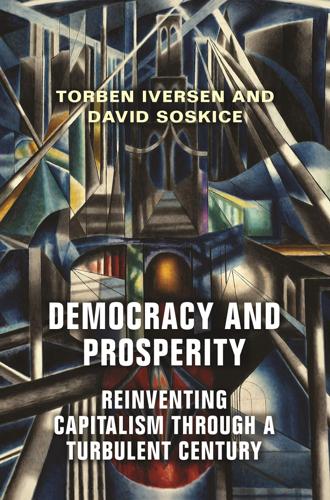
Democracy and Prosperity: Reinventing Capitalism Through a Turbulent Century
by
Torben Iversen
and
David Soskice
Published 5 Feb 2019
Thus, graduate social networks in big, successful cities are (as is known empirically) both large and open or inclusive—though the inclusiveness relates to other well-educated interesting people, perhaps people who themselves open the doors to other valuable social networks. It is exemplary of the “strength of weak ties (Granovetter 1973). While commentators who think in “cultural” terms may see the above description as reflective of cultural values, pure and simple, we see it as reflecting the material base of the successful big-city culture. By contrast, in peripheral communities, social networks are small, long-lasting, high-trust, and closed.
…
“Lousy and Lovely Jobs: The Rising Polarization of Work in Britain.” The Review of Economics and Statistics 89 (1): 118–33. Gordon, Robert. 2016. The Rise and Fall of American Growth: The U.S. Standard of Living since the Civil War. Princeton, NJ: Princeton University Press. Granovetter, M. S. 1973. “The Strength of Weak Ties.” American Journal of Sociology 78 (6): 1360–80. Greenaway, David, and Richard Kneller. 2007. “Heterogeneity, Exporting, and Foreign Direct Investment.” Economic Journal 117 (517): 134–61. Hacker, J. S., P. Rehm, and M. Schlesinger. 2013. “The Insecure American: Economic Experiences, Financial Worries, and Policy Attitudes.”

From Counterculture to Cyberculture: Stewart Brand, the Whole Earth Network, and the Rise of Digital Utopianism
by
Fred Turner
Published 31 Aug 2006
The impact of information technology on productivity per se remains an issue of substantial debate. See Gordon, “Does the ‘New Economy’ Measure Up?” 8. Bateson, Mind and Nature, 7. 9. Bell, Coming of Post-Industrial Society, 478, 480. 10. The classic statement of the power of loose connections to shape employment opportunities can be found in Granovetter, “The Strength of Weak Ties.” 11. Inventors and designers have often played an entrepreneurial role in this regard. Bernard Carlson, for example, following Donald MacKenzie, has suggested that “inventors invent both artifacts and frames of meanings that guide how they manufacture and market their creations.” Carlson, “Artifacts and Frames of Meaning,” 176; see also MacKenzie, “Missile Accuracy.”
…
Marshall McLuhan: Escape into Understanding: A Biography. New York: Basic Books, 1997. Gosse, Van. “A Movement of Movements: The Definition and Periodization of the New Left.” In A Companion to Post-1945 America, edited by Jean-Christophe Agnew and Roy Rosenzweig, 277–302. Malden, MA: Blackwell, 2002. Granovetter, Mark S. “The Strength of Weak Ties.” American Journal of Sociology 78, no. 6 (1973): 1360 – 80. Gravy, Wavy. The Hog Farm and Friends. New York: Links Books, 1974. Grossberg, Lawrence. “On Postmodernism and Articulation: An Interview with Stuart Hall.” In Stuart Hall: Critical Dialogues in Cultural Studies, edited by David Morley and Kuan-Hsing Chen, 131–50.
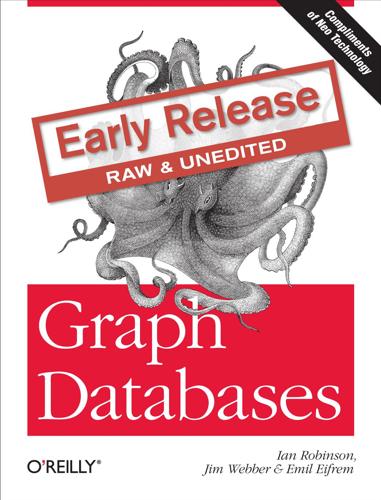
Graph Databases
by
Ian Robinson
,
Jim Webber
and
Emil Eifrem
Published 13 Jun 2013
We’ll add names to relationships where it helps add domain-specific meaning. In many cases, however, we will ignore relationship direction. This won’t impact the analysis, however: the graph structure upholds the same principles irrespective of its construction. 1. In particular, see Granovetter’s pivotal work on the strength of weak ties in social communities: http://sociol ogy.stanford.edu/people/mgranovetter/documents/granstrengthweakties.pdf. For Easley and Kleinberg, see http://www.cs.cornell.edu/home/kleinber/networks-book/ 158 | Chapter 7: Predictive Analysis with Graph Theory Triadic Closures A triadic closure is a common property of social graphs, where we observe that if two nodes are connected via a path involving a third node, there is an increased likelihood that the two nodes will become directly connected at some point in the future.
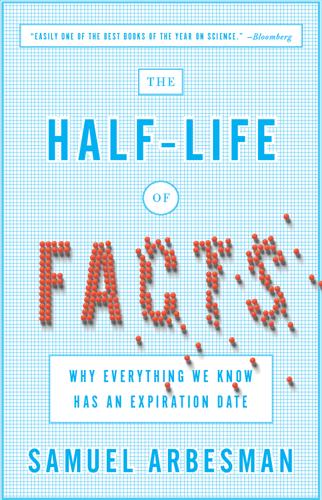
The Half-Life of Facts: Why Everything We Know Has an Expiration Date
by
Samuel Arbesman
Published 31 Aug 2012
If these weak ties are the only ties that act as bridges between these little clusters, these weak ties should therefore be very important for facilitating the spread of information far and wide through the network, from one cluster to another. What Granovetter argued for, in other words (and in the words of the title of his celebrated paper), was “The Strength of Weak Ties.” Granovetter even backed this up with some simple data: He surveyed a group of people on how they got their jobs. Of those who said they got a job through personal contacts, he found that most of these personal contacts were quite “weak.” More recently, scientists have been able to test whether Granovetter was right.

Cogs and Monsters: What Economics Is, and What It Should Be
by
Diane Coyle
Published 11 Oct 2021
Gordon, Robert, 2016, The Rise and Fall of American Growth: The US Standard of Living Since the Civil War, Princeton, NJ: Princeton University Press. Gould, S., 2003, The Hedgehog, the Fox, and the Magister’s Pox, Cambridge, MA: Harvard University Press. Graaff, J. de V., 1971, Theoretical Welfare Economics, Cambridge: Cambridge University Press, 1971, first published in 1957. Granovetter, Mark S., 1973, ‘The Strength of Weak Ties’, American Journal of Sociology, 78 (6), 1360–1380. Griliches, Zvi, 1994, ‘Productivity, R&D, and the Data Constraint’, The American Economic Review, 84 (1), 1–23. Haldane, A., 2012, ‘Towards a Common Financial Language’, Bank of England, http://www.bankofengland.co.uk/publications/Pages/speeches/2012/552.aspx, accessed 16 March 2012.

Shadow Work: The Unpaid, Unseen Jobs That Fill Your Day
by
Craig Lambert
Published 30 Apr 2015
The 2009 book Consequential Strangers: The Power of People Who Don’t Seem to Matter . . . but Really Do, by Melinda Blau and Karen Fingerman, vouches for the importance of such relationships—connections that are not strong ones but that still matter a great deal for health, family life, success in school, and the social contentment of community life. Stanford sociologist Mark Granovetter’s landmark 1973 paper “The Strength of Weak Ties” reinforces this point. He demonstrates how, for example, people more often find jobs through relatively distant others—to whom they are weakly related—than through strong ties with friends or relatives. (One advantage weak ties have is that there are so many more of them.) Yet robots are dissolving this human texture.
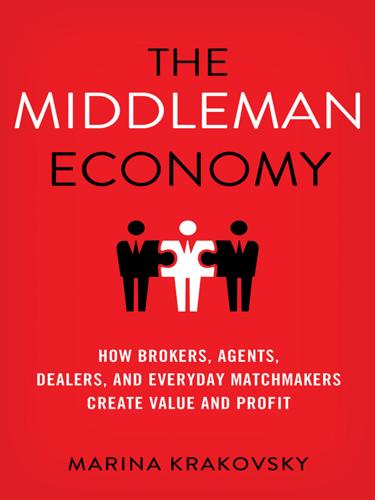
The Middleman Economy: How Brokers, Agents, Dealers, and Everyday Matchmakers Create Value and Profit
by
Marina Krakovsky
Published 14 Sep 2015
Horvath, “A Study of a Large Sociogram,” Behavioral Science 6, no. 4 (October 1961): 279–91, and Carlo Morselli, Inside Criminal Networks (New York: Springer, 2009). 16.This is the principle of homophily: birds of a feather flock together. 17.Mark Granovetter, Getting A Job: A Study of Contacts and Careers (Cambridge, MA: Harvard University Press, 1974) and “The Strength of Weak Ties,” American Journal of Sociology 78, no. 6 (May 1973): 1360–1380. 18.Ronald Burt, Structural Holes: The Social Structure of Competition (Harvard University Press, 1992). 19.Sociologists most often use the term “network broker” or simply “broker” to describe this person. I prefer the term “bridge” because it seems like the most concrete and neutral metaphor for that which spans a hole.
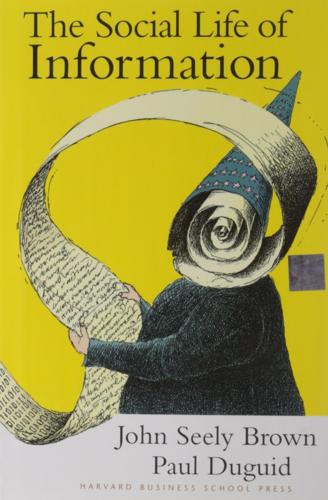
Social Life of Information
by
John Seely Brown
and
Paul Duguid
Published 2 Feb 2000
Paper presented at the American Society of Training and Development International Conference and Exposition, Orlando, FL, June 3, 1996. Available: http://www.cs.cmu.edu/afs/cs/user/jhm/5-601/tvi.html [1999, July 21]. Giddens, Anthony. 1990. The Consequences of Modernity: The Raymond Fred West Memorial Lectures. Stanford, CA: Stanford University Press. Granovetter, Mark. 1973. "The Strength of Weak Ties." American Journal of Sociology 78 (6): 1360 80. . 1985. "Economic Action and Social Structure: The Problem of Embeddedness." American Journal of Sociology 91 (3): 481 510. Gurley, J. William. 1998. "How Low Can You Go?" Above the Crowd Dispatch Page 295 [Online] 21 December.
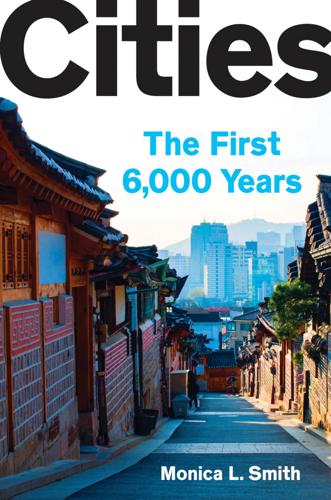
Cities: The First 6,000 Years
by
Monica L. Smith
Published 31 Mar 2019
In a remarkable study: Marcy Rockman, “Landscape Learning in Relation to Evolutionary Theory,” in Macroevolution in Human Prehistory: Evolutionary Theory and Processual Archaeology, eds. Anna Marie Prentiss, Ian Kuijt, and James C. Chatters (New York: Springer, 2009), 51–71. Mark Granovetter coined a term: Mark S. Granovetter, “The Strength of Weak Ties,” American Journal of Sociology 78, no. 6 (1973): 1360–80. Our species’ first real social: Marek Kohn and Steven Mithen, “Handaxes: Products of Sexual Selection?,” Antiquity 73 (1999): 518–26. we have inherited our ancestors’ willingness: For more about the materiality of everyday life and the inescapable impact of objects in even our most intimate moments, see Michael Brian Schiffer, The Material Life of Human Beings, with Andrea R.
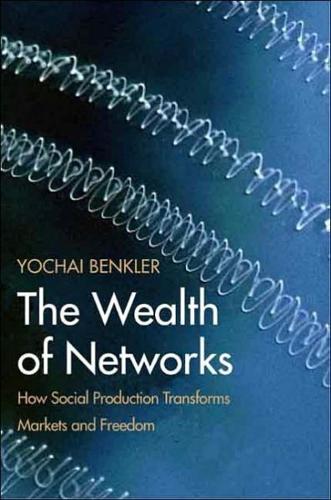
The Wealth of Networks: How Social Production Transforms Markets and Freedom
by
Yochai Benkler
Published 14 May 2006
American Economic Review (Papers and Proceedings) 80 (1990): 252-286, describe empirical studies where communities became less willing to accept undesirable public facilities (Not in My Back Yard or NIMBY) when offered compensation, relative to when the arguments made were policy based on the common weal; Uri Gneezy and Aldo Rustichini, "A Fine Is a Price," Journal of Legal Studies 29 (2000): 1, found that introducing a fine for tardy pickup of kindergarten kids increased, rather than decreased, the tardiness of parents, and once the sense of social obligation was lost to the sense that it was "merely" a transaction, the parents continued to be late at pickup, even after the fine was removed. 36. James S. Coleman, "Social Capital in the Creation of Human Capital," American Journal of Sociology 94, supplement (1988): S95, S108. For important early contributions to this literature, see Mark Granovetter, "The Strength of Weak Ties," American Journal of Sociology 78 (1973): 1360; Mark Granovetter, Getting a Job: A Study of Contacts and Careers (Cambridge, MA: Harvard University Press, 1974); Yoram BenPorath, "The F-Connection: Families, Friends and Firms and the Organization of Exchange," Population and Development Review 6 (1980): 1. 37.
…
American Economic Review (Papers and Proceedings) 80 (1990): 252-286, describe empirical studies where communities became less willing to accept undesirable public facilities (Not in My Back Yard or NIMBY) when offered compensation, relative to when the arguments made were policy based on the common weal; Uri Gneezy and Aldo Rustichini, "A Fine Is a Price," Journal of Legal Studies 29 (2000): 1, found that introducing a fine for tardy pickup of kindergarten kids increased, rather than decreased, the tardiness of parents, and once the sense of social obligation was lost to the sense that it was "merely" a transaction, the parents continued to be late at pickup, even after the fine was removed. 36. James S. Coleman, "Social Capital in the Creation of Human Capital," American Journal of Sociology 94, supplement (1988): S95, S108. For important early contributions to this literature, see Mark Granovetter, "The Strength of Weak Ties," American Journal of Sociology 78 (1973): 1360; Mark Granovetter, Getting a Job: A Study of Contacts and Careers (Cambridge, MA: Harvard University Press, 1974); Yoram BenPorath, "The F-Connection: Families, Friends and Firms and the Organization of Exchange," Population and Development Review 6 (1980): 1. 37.
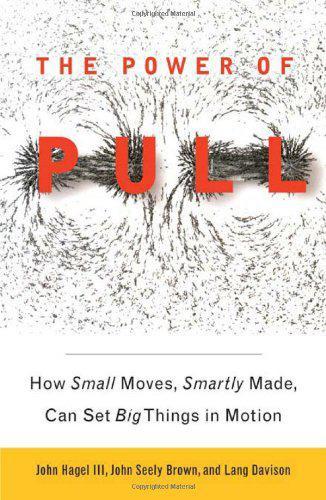
The Power of Pull: How Small Moves, Smartly Made, Can Set Big Things in Motion
by
John Hagel Iii
and
John Seely Brown
Published 12 Apr 2010
With over 1 Million People in the World Able to Do Your Job, Altium Acts to Help More,” Reuters, April 20, 2009, http://www.reuters.com/article/pressRelease/idUS180975+20-Apr-2009+MW20090420. 3 Jeff Mull, “Clear to Land: Dusty Payne Wins Kustom Air Strike and $50,000,” Surfer magazine, April 2009, http://www.surfermag.com/features/onlineexclusives/dusty_payne_wins_kustom_air_strike_and_50000/. 4 Creative talent is increasingly flocking to creative cities. See John Hagel III, John Seely Brown, and Lang Davison, The 2009 Shift Index: Measuring the Forces of Long-Term Change (San Jose, Calif.: Deloitte Development, June 2009). 5 See Mark Granovetter, “The Strength of Weak Ties,” American Journal of Sociology 78, no. 6 (May 1973). 6 See Vanina Leschziner, “Kitchen Stories: Patterns of Recognition in Contemporary High Cuisine,” Sociological Forum 22, no. 1 (February 14, 2007): 77-101. 7 See John Hagel III and John Seely Brown, “Productive Friction: How Difficult Business Partnerships Can Accelerate Innovation,” Harvard Business Review, February 1, 2005. 8 For more about the benefits of diversity, see Scott Page, The Difference: How the Power of Diversity Creates Better Groups, Firms, Schools, and Societies (Princeton, N.J.: Princeton University Press, 2007).
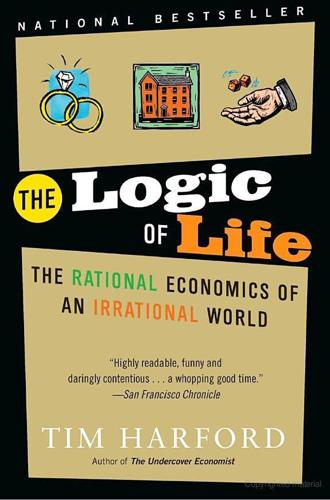
The Logic of Life: The Rational Economics of an Irrational World
by
Tim Harford
Published 1 Jan 2008
Another example: Bertrand and Mullainathan, “Are Emily and Greg More Employable than Lakisha and Jamal?” So what is the answer: Jacob Vigdor, “When Are Ghettos Bad? Lessons from Immigrant Segregation in the United States,” working paper, June 2006, trinity.aas.duke.edu/~jvigdor/cgv2006a.pdf. The sociologist Mark Granovetter: Mark Granovetter, “The Strength of Weak Ties,” American Journal of Sociology 78, no. 6(May 1973): 1360–80, www.stanford.edu/dept/soc/people/faculty/granovetter/documents/TheStrengthof WeakTies.pdf. 7. THE WORLD IS SPIKY The World is Spiky: I stole this delightful title from Richard Florida’s article with Tim Gulden in The Atlantic, October 2005.
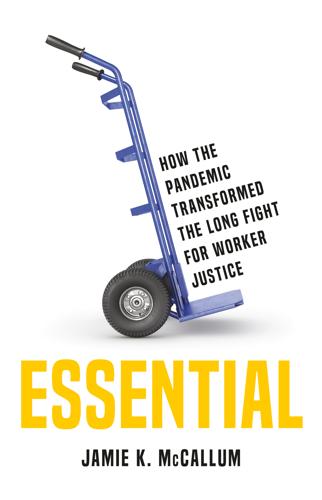
Essential: How the Pandemic Transformed the Long Fight for Worker Justice
by
Jamie K. McCallum
Published 15 Nov 2022
Strangers chipped in online to find a home for an evicted single mother. All these human-interest stories came on top of a barrage of uplifting stories about collective resistance to poverty, hunger, and destitution. This emotional blackmail allowed us to imagine that what sociologist Mark Granovetter once called “the strength of weak ties” was enough to save us. And also to conveniently forget that the problems these groups were attending to should not have existed in the first place. From a social reproduction perspective, mutual aid cannot be the horizon of our caring capacity. Voluntarism is no substitute for government action, just as GoFundMe is not health insurance.

Is the Internet Changing the Way You Think?: The Net's Impact on Our Minds and Future
by
John Brockman
Published 18 Jan 2011
Crap detection—Hemingway’s name for what digital librarians call credibility assessment—is another essential literacy. If all schoolchildren could learn one skill before they go online for the first time, I think it should be the ability to find the answer to any question and the skills necessary to determine whether the answer is accurate or not. Network awareness, from the strength of weak ties and the nature of small-world networks to the power of publics and the how and why of changing Facebook privacy settings, would be the next literacy I would teach, after crap detection. Networks aren’t magic, and knowing the principles by which they operate confers power on the knowledgeable.
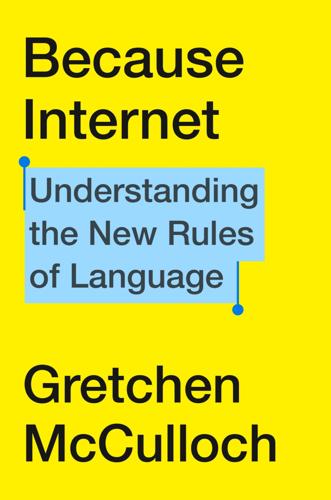
Because Internet: Understanding the New Rules of Language
by
Gretchen McCulloch
Published 22 Jul 2019
changing the vowel in “car”: Lesley Milroy. 1980. Language and Social Networks. Blackwell. strong and weak ties: James Milroy and Lesley Milroy. 1985. “Linguistic Change, Social Network and Speaker Innovation.” Journal of Linguistics 21(2). pp. 339–384. Strong ties are people: Mark S. Granovetter. 1973. “The Strength of Weak Ties.” American Journal of Sociology 78(6). pp. 1360–1380. English and Icelandic: Magnús Fjalldal. 2005. Anglo-Saxon England in Icelandic Medieval Texts. University of Toronto Press. Fagyal and colleagues: Zsuzsanna Fagyal, Samarth Swarup, Anna María Escobar, Les Gasser, and Kiran Lakkaraju. 2010.
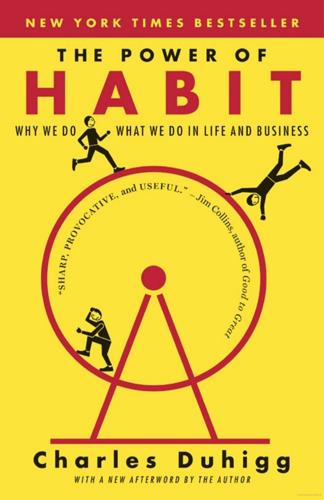
The Power of Habit: Why We Do What We Do in Life and Business
by
Charles Duhigg
Published 1 Jan 2011
Coser (New York: Harcourt, 1975); John Delany, “Aspects of Donative Resource Allocation and the Efficiency of Social Networks: Simulation Models of Job Vacancy Information Transfers Through Personal Contacts,” PhD diss., Yale University, 1980; E. Ericksen and W. Yancey, “The Locus of Strong Ties,” unpublished manuscript, Department of Sociology, Temple University, 1980. 8.15 most of the population will be untouched Mark Granovetter, “The Strength of Weak Ties: A Network Theory Revisited,” Sociological Theory 1 (1983): 201–33. 8.16 registering black voters in the South McAdam, “Recruitment to High-Risk Activism.” 8.17 more than three hundred of those invited Ibid.; Paulsen, “Specifying the Relationship Between Social Ties and Activism.” 8.18 participated in Freedom Summer In a fact-checking email, McAdam provided a few details about the study’s genesis: “My initial interest was in trying to understand the links between the civil rights movement and the other early new left movements, specifically the student movement, the anti-war movement, and women’s liberation movement.
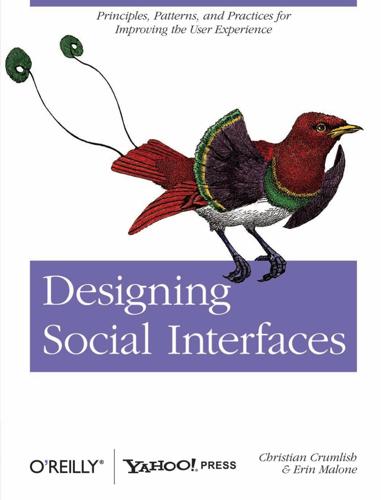
Designing Social Interfaces
by
Christian Crumlish
and
Erin Malone
Published 30 Sep 2009
Download at WoweBook.Com Further Reading 381 Related patterns “Forums” on page 292 “Profile” on page 86 As seen on Facebook (http://www.facebook.com) Flickr (http://www.flickr.com) Google Groups (http://groups.google.com/) Multiply (http://multiply.com) Yahoo Groups (http://groups.yahoo.com) Further Reading “Friends, Friendsters and Top 8: Writing community into being on social network sites,” by danah boyd, 2006, http://firstmonday.org/htbin/cgiwrap/bin/ojs/index.php/fm/article/ view/1418/1336 “Friends May Be the Best Guide Through the Noise,” by Brad Stone, The New York Times, May 4, 2008, http://www.nytimes.com/2008/05/04/technology/04essay.html Six Degrees: The Science of a Connected Age, by Duncan J. Watts, W.W. Norton and Co., 2004 Social Network Analysis: A Handbook, by John P. Scott, Sage Publications Ltd., 2000 The Strength of Weak Ties: A Network Theory Revisited, by Mark Granovetter, State University of New York, Stony Brook, 1983, http://www.si.umich.edu/~rfrost/courses/ SI110/readings/In_Out_and_Beyond/Granovetter.pdf “You are who you know,” by Andrew Leonard, Salon, June 15, 2004, http://dir.salon.com/ story/tech/feature/2004/06/15/social_software_one/index.html “You are who you know: Part 2,” by Andrew Leonard, Salon, June 16, 2004, http://dir. salon.com/story/tech/feature/2004/06/16/social_software_two/index.html Download at WoweBook.Com Download at WoweBook.Com Chapter 15 Good Cop, Bad Cop In the past I engaged in the whack-a-mole game against abusers.

The Economics of Enough: How to Run the Economy as if the Future Matters
by
Diane Coyle
Published 21 Feb 2011
Gokhale, Jagadeesh, and Kent Smetters. 2003. Fiscal and Generational Imbalances: New Budget Measures for New Budget Priorities. Jackson, TN: AIE Press. Goldin, Claudia, and Lawrence Katz. 2008. The Race between Education and Technology. Cambridge, MA: Harvard University Press. Granovetter, Mark. 1973. “The Strength of Weak Ties.” American Journal of Sociology 78:1, pp. 1360–80. Groysberg, Boris. 2010. Chasing Stars: The Myth of Talent and the Portability of Performance. Princeton: Princeton University Press. Haidt, Jonathan. 2006. The Happiness Hypothesis: Putting Ancient Wisdom and Philosophy to the Test of Modern Science.
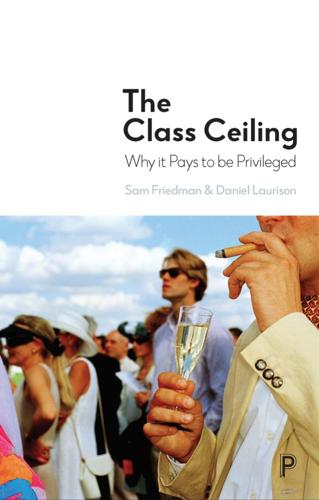
The Class Ceiling: Why It Pays to Be Privileged
by
Sam Friedman
and
Daniel Laurison
Published 28 Jan 2019
Goodall, L. (2017) ‘The BBC gender pay gap is bad – but its class gap is worse’, Sky News, 23 July (https://news.sky.com/story/ the-bbc-pay-gap-is-bad-its-class-gap-is-worse-10957166). Gorman, E.H. and Kmec, J.A. (2009) ‘Hierarchical rank and women’s organizational mobility: Glass ceilings in corporate law firms’, American Journal of Sociology, 114(5), 1428-74. Granovetter, M.S. (1973) ‘The strength of weak ties’, American Journal of Sociology, 78(6), 1360 (https://doi. org/10.1086/225469). Green, F., Machin, S., Murphy, R. and Zhu, Y. (2011) ‘The changing economic advantage from private schools’, Economica, 79(316), 658-79 (https://doi.org/10.1111/j.14680335.2011.00908.x). Green, F., Henseke, G. and Vignoles, A. (2016) ‘Private schooling and labour market outcomes’, British Educational Research Journal, 43(1), 7-28 (https://doi.org/10.1002/berj.3256). 337 The Class Ceiling Grierson, J. (2017) ‘Lineker £1.79m, Balding £199,999: The list that shows BBC’s gender gap’, The Guardian, 19 July (www. theguardian.com/media/2017/jul/19/lineker-balding-the-listthat-shows-bbc-gender-gap).
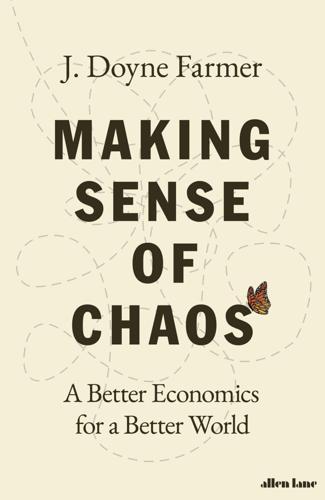
Making Sense of Chaos: A Better Economics for a Better World
by
J. Doyne Farmer
Published 24 Apr 2024
Feinstein (ed.), Socialism, Capitalism and Economic Growth. Cambridge: Cambridge University Press. Gordon, Deborah M. 1999. Ants at Work: How an Insect Society is Organized. New York: The Free Press. Grandmont, Jean-Michel. 1985. ‘On Endogenous Competitive Business Cycles’. Econometrica 53 (5): 995–1045. Granovetter, Mark S. 1973. ‘The Strength of Weak Ties’. American Journal of Sociology 78 (6): 1360–1380, doi: 10.1086/225469. Greenwood, Robin and David Scharfstein. 2013. ‘The Growth of Finance’. Journal of Economic Perspectives 27 (2): 3–28, doi: 10.1257/jep.27.2.3. Grossman, Sanford J. and Joseph E. Stiglitz. 1980. ‘On the Impossibility of Informationally Efficient Markets’.
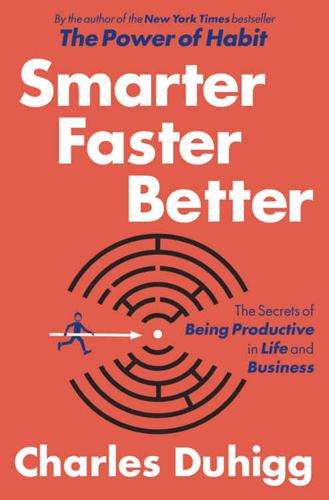
Smarter Faster Better: The Secrets of Being Productive in Life and Business
by
Charles Duhigg
Published 8 Mar 2016
Burt, “The Social Structure of Competition,” Explorations in Economic Sociology 65 (1993): 103; Lee Fleming, Santiago Mingo, and David Chen, “Collaborative Brokerage, Generative Creativity, and Creative Success,” Administrative Science Quarterly 52, no. 3 (2007): 443–75; Satu Parjanen, Vesa Harmaakorpi, and Tapani Frantsi, “Collective Creativity and Brokerage Functions in Heavily Cross-Disciplined Innovation Processes,” Interdisciplinary Journal of Information, Knowledge, and Management 5, no. 1 (2010): 1–21; Thomas Heinze and Gerrit Bauer, “Characterizing Creative Scientists in Nano-S&T: Productivity, Multidisciplinarity, and Network Brokerage in a Longitudinal Perspective,” Scientometrics 70, no. 3 (2007): 811–30; Markus Baer, “The Strength-of-Weak-Ties Perspective on Creativity: A Comprehensive Examination and Extension,” Journal of Applied Psychology 95, no. 3 (2010): 592; Ajay Mehra, Martin Kilduff, and Daniel J. Brass, “The Social Networks of High and Low Self-Monitors: Implications for Workplace Performance,” Administrative Science Quarterly 46, no. 1 (2001): 121–46.

Machine, Platform, Crowd: Harnessing Our Digital Future
by
Andrew McAfee
and
Erik Brynjolfsson
Published 26 Jun 2017
Very Cheap Indeed,” Ramez Naam (blog), August 10, 2015, http://rameznaam.com/2015/08/10/how-cheap-can-solar-get-very-cheap-indeed. ¶ We cited this study in our last book, and we’re citing it again here because the point is fundamental. # The importance of distant, or “weak,” connections has been emphasized in several papers in the sociology literature, including the widely cited classic Mark S. Gran-ovetter, “The Strength of Weak Ties,” American Journal of Sociology 78, no. 6 (1973): 1360–80; and the more recent Sinan Aral and Marshall Van Alstyne, “The Diversity-Bandwidth Trade-off 1,” American Journal of Sociology 117, no. 1 (2011): 90–171. ** For $350 a cast member would record an outgoing voicemail message for you, $1,000 got you two red-carpet tickets for the premiere, you could name a character in the movie for $6,500, and $10,000 got you a walk-on part. †† Andreessen was referring to the popular 1999 science fiction film The Matrix.
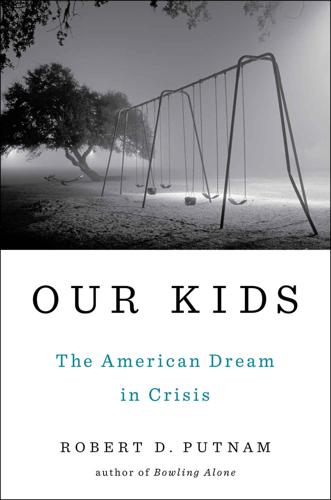
Our Kids: The American Dream in Crisis
by
Robert D. Putnam
Published 10 Mar 2015
This national survey included 30,000 respondents in 2000; for more details and access to the raw data, see http://www.hks.harvard.edu/saguaro/communitysurvey/ and http://www.ropercenter.uconn.edu/data_access/data/datasets/social_capital_community_survey.html. See also Campbell, Marsden, and Hurlbert, “Social Resources and Socioeconomic Status,” 97–117. 11. See Mark S. Granovetter, “The Strength of Weak Ties,” American Journal of Sociology 78 (May 1973): 1360–80; Mark Granovetter, Getting a Job: A Study of Contacts and Careers (Cambridge: Harvard University Press, 1974); Nan Lin, Walter M. Ensel, and John C. Vaughn, “Social Resources and the Strength of Ties: Structural Factors in Occupational Status Attainment,” American Sociological Review 46 (August 1981): 393–405; Joel M.
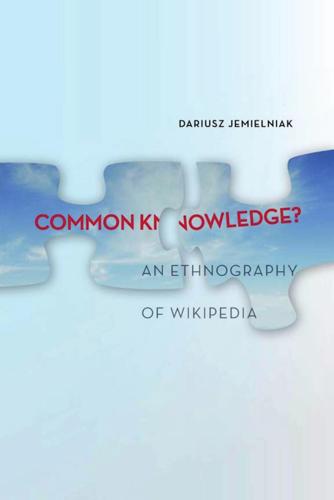
Common Knowledge?: An Ethnography of Wikipedia
by
Dariusz Jemielniak
Published 13 May 2014
The norm of reciprocity: A preliminary statement. American Sociological Review, 25(2), 161–178. Granovetter, M. (1985). Economic action and social structure: The problem of embeddedness. American Journal of Sociology, 91(3), 481–510. R e f e r e n c e s 2 5 3 Granovetter, M. S. (1973). The strength of weak ties. American Journal of Sociology, 78(6), 1360–1380. Grant, R. M. (2010). Contemporary strategy analysis. New York: Wiley. Green, M. C., & Carpenter, J. M. (2011). Trust, deception, and identity on the Internet. In Z. Birchmeier, B. Dietz-Uhler, & G. Stasser (Eds.), Strategic uses of social technology: An interactive perspective of social psychology (pp. 40–62).

Sorting Things Out: Classification and Its Consequences
by
Geoffrey C. Bowker
and
Susan Leigh Star
Published 25 Aug 2000
In Cognitive Studies: Bulletin of the japanese Cognitive Science Society 3(2): 62-82. Goody, Jack. 1971. The Domestication of the Savage Mind. Cambridge: Cambridge University Press. Goody, Jack. 1987. The Interface Between the Written and the Oral. Cambridge: Cambridge University Press. Granovetter, M. ” The Strength of Weak Ties”. American Sociological Review 70: 1360-1380. Graunt, John. 1662. Natural and Political Observations Mentioned in a Following Index and Made upon the Bills of Mortality. London: Roycroft, (reprinted 1975, New York: Arno Press). Gray, A. , R. Elkan, and J. Robinson. 1991. Policy Issues in Nursing.
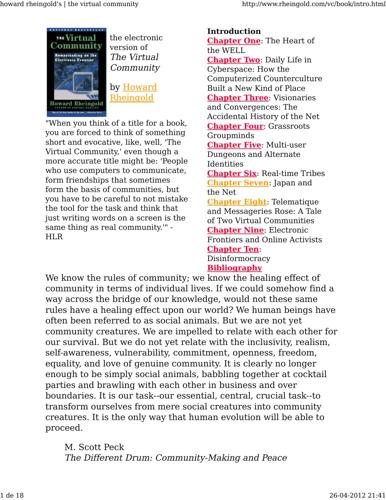
Howard Rheingold
by
The Virtual Community Homesteading on the Electronic Frontier-Perseus Books (1993)
Published 26 Apr 2012
"Information Sharing Face-to-Face Teleconferencing, and Electronic Chat Groups." Small Group Research 29, no. 6 (1998): 714-743. Granito, A.J., L. Groarke, and J. Kohls. "Open Peer Commentaries on Virtuality, Conversation, and Morality." Technology Studies 3, no. 2 (1996): 215-226. Granovetter, Mark. "The Strength of Weak Ties." American Journal of Sociology 78, no. 6 (1973): 1360-1380. Gregson, K. "Conversation and Community or Sequential Monologues: An Analysis of Politically Oriented Newsgroups." Proceedings of the ASIS Annual Meeting 35 (1998): 531-541. Griffith, T.L., and G.B. Northcraft. "Distinguishing Between the Forest and the Trees: Media, Features, and Methodology in Electronic Communication Research."

Twitter and Tear Gas: The Power and Fragility of Networked Protest
by
Zeynep Tufekci
Published 14 May 2017
Participatory Media and Political Expression,” 2013, http://ethanzuckerman.com/papers/cutecats2013.pdf. 31. Mike Isaac, “Facebook Said to Create Censorship Tool to Get Back into China,” New York Times, November 22, 2016, http://www.nytimes.com/2016/11/22/technology/facebook-censorship-tool-china.html. 32. Mark S. Granovetter, “The Strength of Weak Ties,” American Journal of Sociology 78, no. 6 (1973): 1360–80. 33. Eytan Bakshy, Solomon Messing, and Lada A. Adamic, “Exposure to Ideologically Diverse News and Opinion on Facebook,” Science 348, no. 6239 (2015): 1130, http://science.sciencemag.org/content/348/6239/1130. 34. Michael Suk-Young Chwe, Rational Ritual: Culture, Coordination, and Common Knowledge (Princeton, N.J.: Princeton University Press, 2003). 35.

Sorting Things Out: Classification and Its Consequences (Inside Technology)
by
Geoffrey C. Bowker
Published 24 Aug 2000
Ninchi Kagaku. " I n Cognitive Studies: Bulletin of the japanese Cognitive Science Society 3 ( 2 ) : 62-8 2 . Goody, Jack. 1 97 1 . The Domestication of the Savage Mind. Cambridge: Cam bridge University Press. Goody, Jack. 1 987. The Interface Between the Written and the Oral. Cambridge : Cambridge University Press. 348 References Granovetter, M. " The Strength of Weak Ties. " American Sociological Review 70: 1 360- 1 380. Graunt, John. 1 66 2 . Natural and Political Observations Mentioned in a Following Index and Made upon the Bills of Mortality. London: Roycroft, (reprinted 1 97 5 , N e w York: Arno Press). Gray, A. , R. Elkan, and J. Robinson. 1 99 1 . Policy Issues in Nursing.

Scale: The Universal Laws of Growth, Innovation, Sustainability, and the Pace of Life in Organisms, Cities, Economies, and Companies
by
Geoffrey West
Published 15 May 2017
Strumsky, “Invention in the City: Increasing Returns to Patenting as a Scaling Function of Metropolitan Size,” Research Policy 36 (2007): 107–20. 5. See, for example, B. Wellman and S. D. Berkowitz, Social Structures: A Network Approach Sciences (Cambridge, UK: Cambridge University Press, 1988); M. Granovetter, “The Strength of Weak Ties: A Network Theory Revisited,” Sociological Theory 1 (1983): 201–33, in P. V. Marsden and N. Lin, eds., Social Structure and Network Analysis (Thousand Oaks, CA: Sage, 1982); Claude Fischer, To Dwell Among Friends: Personal Networks in Town and City (Chicago: University of Chicago Press, 1982); R.
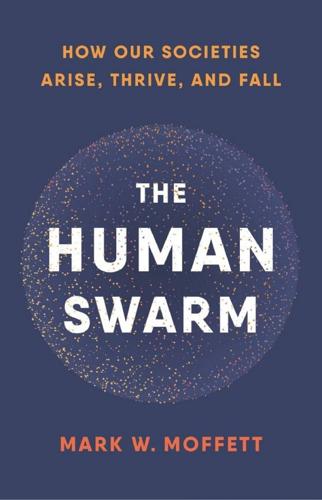
The Human Swarm: How Our Societies Arise, Thrive, and Fall
by
Mark W. Moffett
Published 31 Mar 2019
Race: The History of an Idea in America. New York: Oxford University Press. Gould RA. 1969. Yiwara: Foragers of the Australian Desert. New York: Scribner. Grabo A, M van Vugt. 2016. Charismatic leadership and the evolution of cooperation. Evol Hum Behav 37:399–406. Granovetter M. 1983. The strength of weak ties: A network theory revisited. Soc Theory 1:201–233. Greene J. 2013. Moral Tribes. New York: Penguin Books. Greenshields TH. 1980. “Quarters” and ethnicity. In GH Blake, RI Lawless, eds. The Changing Middle Eastern City. London: Croom Helm. pp. 120–140. Greenwald AG, MR Banaji, BA Nosek. 2015.

The Life and Death of Ancient Cities: A Natural History
by
Greg Woolf
Published 14 May 2020
Manchester: Manchester University Press. Graham, A. J. 1982. “The Colonial Expansion of Greece.” In Cambridge Ancient History III.3: The Expansion of the Greek World, Eighth to Sixth Centuries B.C., edited by John Boardman and N. G. L. Hammond, 83–162. Cambridge: Cambridge University Press. Granovetter, Mark S. 1973. “The Strength of Weak Ties.” American Journal of Sociology 78 (6): 1360–1380. Greenfield, Haskel J. 2010. “The Secondary Products Revolution: The Past, the Present and the Future.” World Archaeology 42 (1): 29–54. Greenhalgh, Michael. 2012. From Constantinople to Córduba: Dismantling Ancient Architecture in the East, North Africa and Islamic Spain.

The Power Law: Venture Capital and the Making of the New Future
by
Sebastian Mallaby
Published 1 Feb 2022
BACK TO NOTE REFERENCE 3 By the same logic, clusters have deep pools of complementary companies: a router manufacturer seeking an esoteric microchip can find exactly the right sort of semiconductor design firm within a fifty-mile radius. See Enrico Moretti, The New Geography of Jobs (New York: Mariner Books, 2013), 126–27, 134. BACK TO NOTE REFERENCE 4 Granovetter’s 1973 article in The American Journal of Sociology, “The Strength of Weak Ties,” is the seventh most cited social science paper ever, according to an analysis of Google Scholar by Elliott Green of LSE. BACK TO NOTE REFERENCE 5 Larissa MacFarquhar, “The Deflationist: How Paul Krugman Found Politics,” New Yorker, March 1, 2010. BACK TO NOTE REFERENCE 6 Niall Ferguson, The Square and the Tower: Networks, Hierarchies, and the Struggle for Global Power (New York: Penguin Press, 2017), 15.